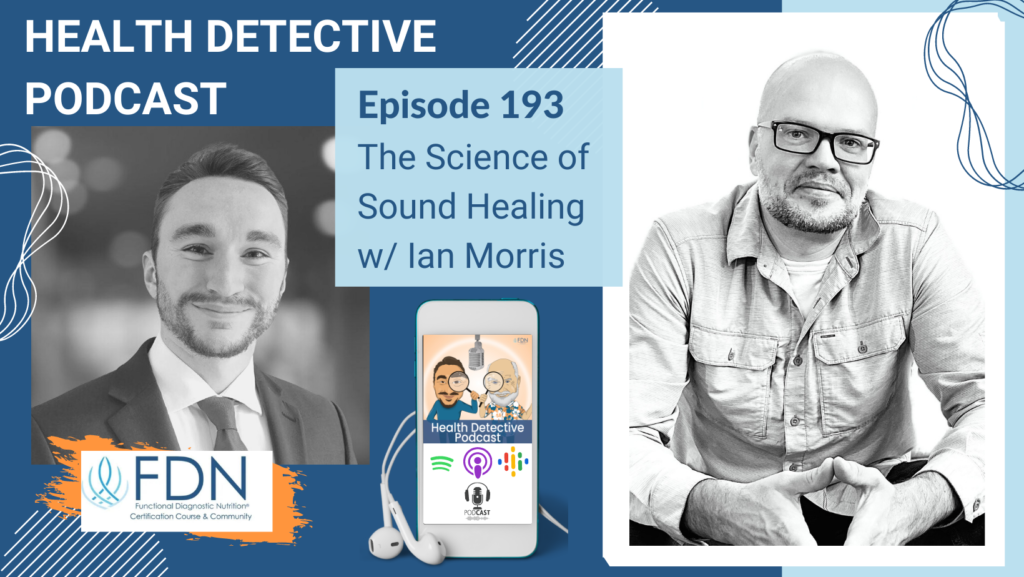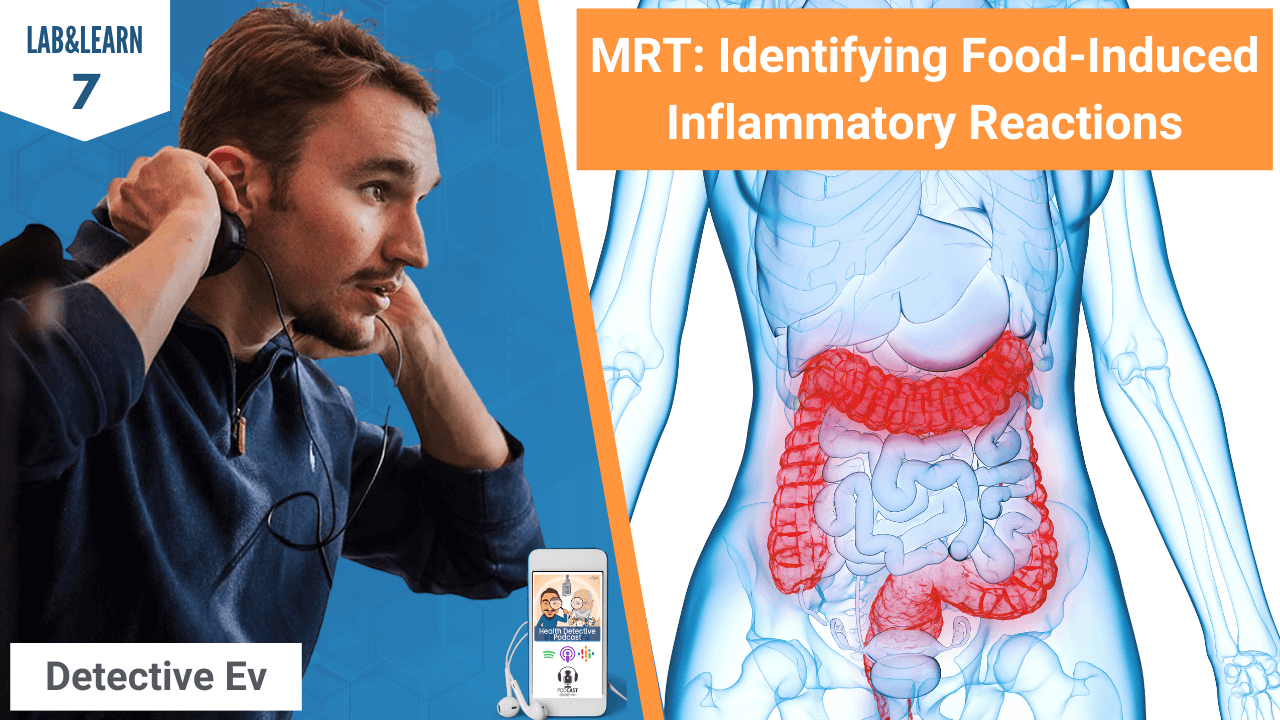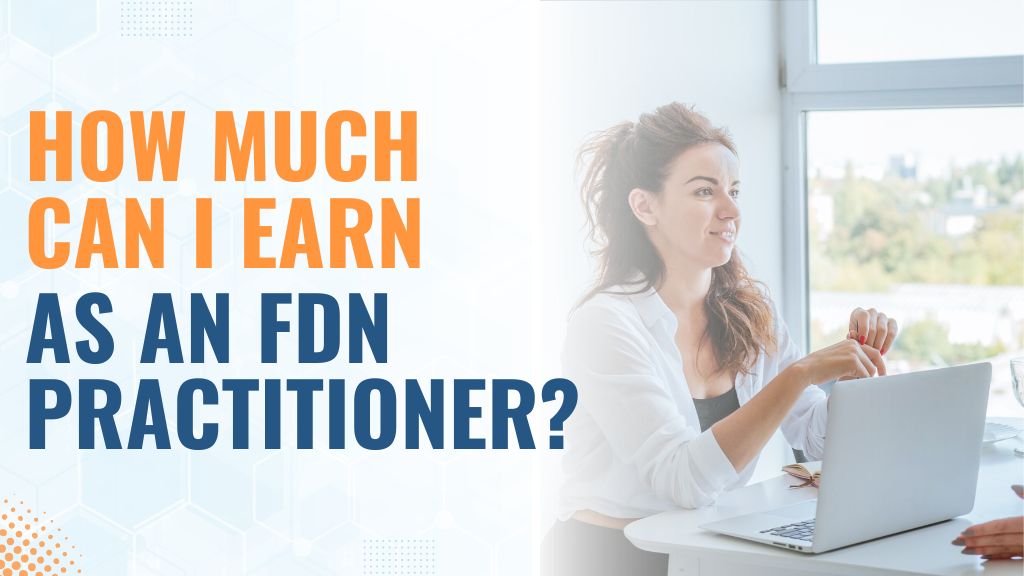Introduction
[00:00:00] Detective Ev: Well, hello my friends. Welcome back to another episode of the Health Detective Podcast by Functional Diagnostic Nutrition. My name is Evan Transue, AKA Detective Ev. I will be your host for today’s show. We have a bit of a unique episode today for a couple of reasons. One is the fact that we are talking about sound healing with our guest, Ian Morris.
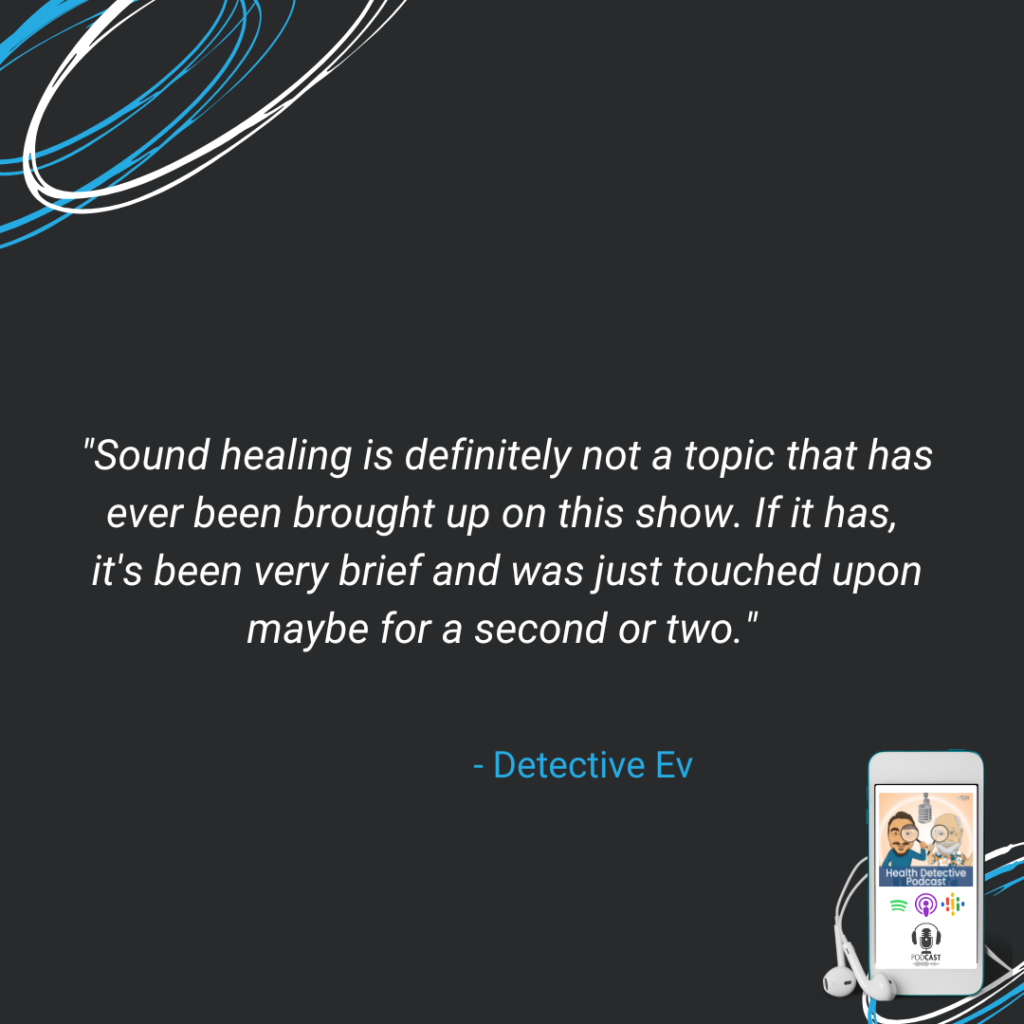
Sound healing is definitely not a topic that has ever been brought up on this show. If it has, it’s been very brief and was just touched upon maybe for a second or two. We’ve never had one episode where we touched on it in depth and had real questions about the science behind it, how does it work? We touch on all of that today, so it’s going to be pretty cool.
Another reason that it’s unique is because this episode is actually the audio extract of one of our ProSeries webinars for AFDNP. Now, AFDNP is the Association of Functional Diagnostic Nutrition Practitioners. It is something that if you’re not even an FDN trainee yet, this is pretty far down the line for you. But once someone goes through the FDN course, they have the ability to join AFDNP. It is an optional thing. It’s not required.
Many graduates do choose to do that because the association gives you a bunch of extra benefits. We’ve touched on that in a separate episode with Jennifer Woodward. But one of the benefits out of the many that we get is ProSeries.
ProSeries is when she brings on a guest. It’d be similar, I guess, to a podcast, except it’s not as interview based. I mean, I do ask questions today, but that’s just my style.
AFDNP ProSeries on Sound Healing
Typically, people would come on and it’d be more webinar format, but there’s a live Q&A, so that’s the advantage. I know a lot of the times we have guests on, and I do imagine that some of you guys would love to be asking questions Live, but it’s just not really practical when we’re recording the podcast.
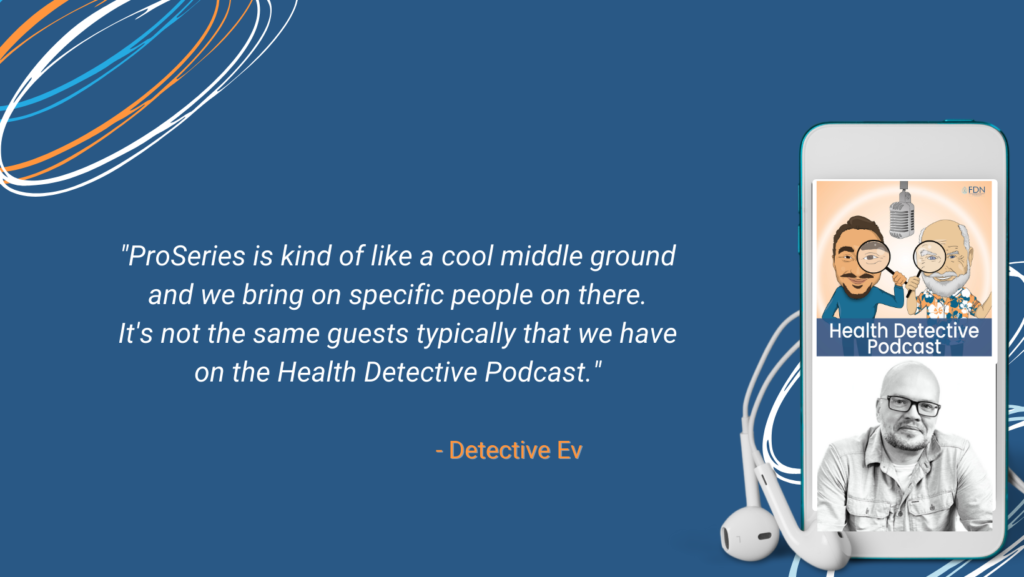
ProSeries is kind of like a cool middle ground and we bring on specific people on there. It’s not the same guests typically that we have on the Health Detective Podcast. In fact, it’s completely different. I would say it gets much more technical on there, where here we typically flow with a little bit more of a story.
Without further ado, let’s get to today’s episode.
All right, we will get this rolling then. Hello everyone and welcome to another ProSeries. Evan Transue here. I have never been here before for a ProSeries, but I feel like I know most of the names that are already on here today. If nothing else, I know that you guys hopefully listen to the Health Detective Podcast. I asked for Jennifer’s permission, and we will be saving this episode on our podcast as well.
Jennifer is on a division-head meeting, and they said, hey, who likes to talk and get on camera? And of course, that’s me. So, I’m here with you guys.
I want to read the bio today to give you guys a little context of what we’re talking about. We’re going to be talking with Ian Morris about sound healing, and we’re also talking to Joe Phillips. We’ll explain how these two come together as we move along in the presentation. So, a little bit about Ian.
Starting with Sound Healing to Reverse Two Diagnoses
He calls himself a sound alchemist. However, his personal story is Joe Dispenza-level fascinating. In 2011, he was diagnosed with colon cancer and MS. Ian’s cancer was advanced, but because he didn’t have insurance as a musician, he didn’t seek the treatments or see the specialists that doctors referred him to. The medical debt became too much that he had to accept death or dive into holistic healing. We know which one he chose.
He discovered The Healing Power of Sound, which naturally intrigued him as a musician. He began working with frequencies alongside deep meditation and mindfulness. Breathwork, meditation, and sound healing were the gateways to helping him shift his mindset, which in turn gave him the strength to change his eating and sleeping habits.
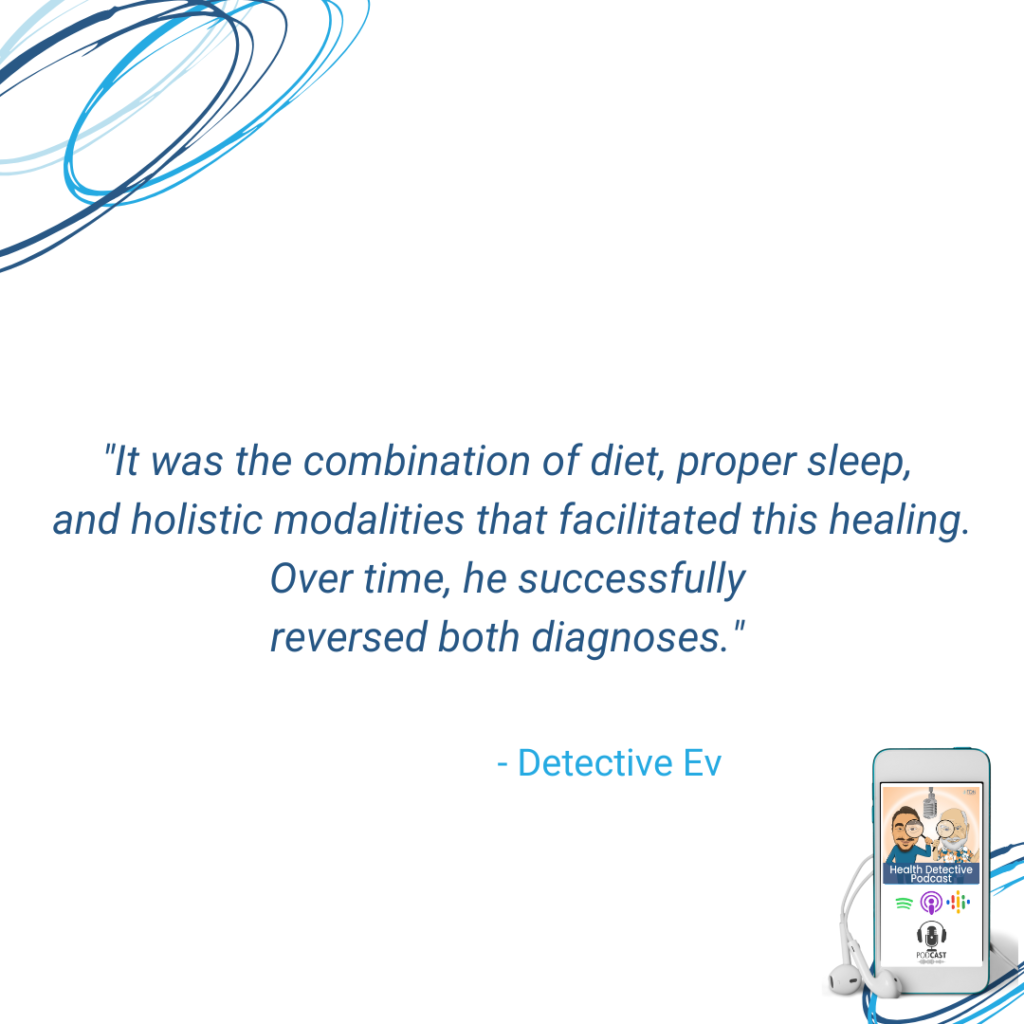
It was the combination of diet, proper sleep, and holistic modalities that facilitated this healing. Over time, he successfully reversed both diagnoses. This is what inspired him to begin Listening to Smile.
This is awesome. Those are some pretty serious diagnoses, obviously. We deal with a lot of people, especially myself on the podcast, getting to interview people who have been through these health challenges. They’ve been through some stuff, not always life threatening.
We both have colon cancer and MS here. MS is one of the only directly life-threatening autoimmune diseases. And of course, colon cancer is not a great thing to be having. Yet here you are today, sharing the story with us and on the webinar. That’s amazing.
So, welcome. Thanks for coming on.
[00:04:09] Ian Morris: Yeah, thanks for having me. I’m excited to share the story and the music and everything. So, thanks for having me.
Sound Healing Uses Frequency as a Guide
[00:04:16] Detective Ev: Absolutely. I have some questions for you guys, of course. But I also understand that you probably want to share some information with us to start off, is that correct?
[00:04:24] Ian Morris: Yeah. As far as I knew ahead of time, was Joe, we were going to focus a little bit about workplace wellness and how the FDN network could utilize the music and the tools that we have.
[00:04:37] Detective Ev: Okay. Well, I have no problem guiding it to some degree. My first thing, what is frequency minded music, this sound healing thing? I mean, how do people use it? Why does it work? Let’s just dive into that.
Admittedly, even for me, I’ve heard of it, no pun intended. Well, that was a terrible joke. This is why they don’t let me host these things. This is why Jennifer switched you guys. I can’t resist.
But seriously though, even as someone who’s very functionally oriented, I admittedly don’t know nearly enough about that. Nor would I have ever known that this could be something so powerful as to be contributed to a legitimate healing in the way that you experienced. So, what is this sound healing?
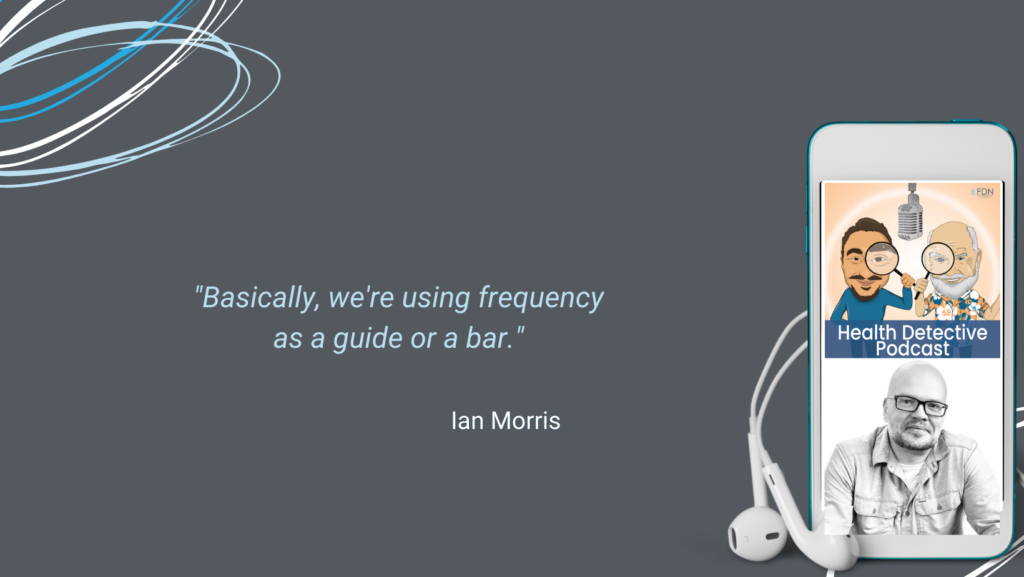
[00:05:12] Ian Morris: Basically, we’re using frequency as a guide or a bar.
You know, we all have those friends who can complain a lot or look at the world and everything’s out to get them. If you hang out with those people long enough, that energy starts rubbing off on you. But the other side of that coin is we all have those friends who are very positive, outgoing, and see the world as sunshine and rainbows. If you hang out with that person, that starts affecting you as well.
Sound Healing: Music is That Positive Uplifting Friend
This music is really just tools that change your vibration. It’s through consistency and through that raising the vibration or raising the bar of what you’re surrounding yourself with.
One of the big things that we try to do with our listeners is really concentrate on the focus that everything is vibration of light or sound in this perceived reality. What we’re having them look at is then the thoughts they’re thinking, the food they’re eating, the people they’re surrounding themselves with, the media, the tv, the film that they’re taking in. All of these are inputs of vibrational proportions that are affecting our vibration, our personal vibration.
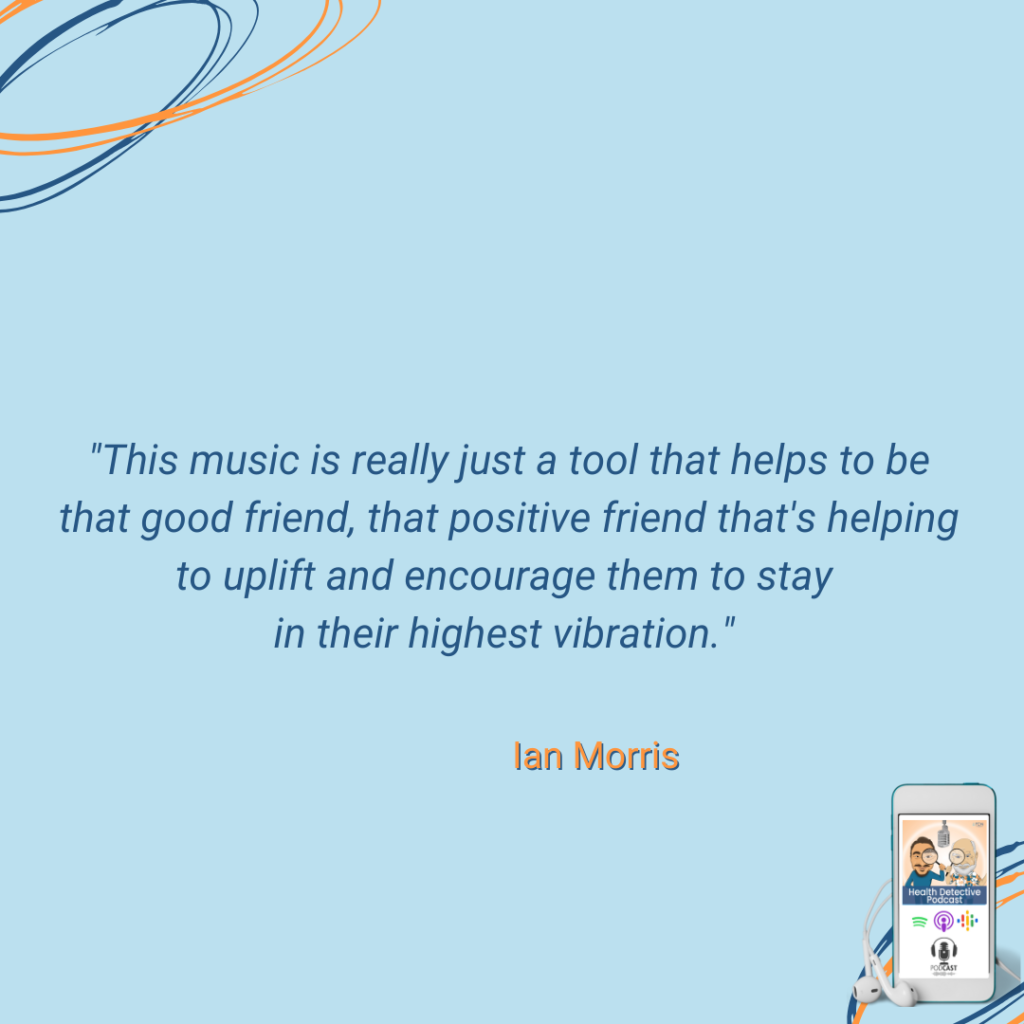
This music is really just a tool that helps to be that good friend, that positive friend that’s helping to uplift and encourage them to stay in their highest vibration.
[00:06:32] Detective Ev: I think this is something that resonates with a lot of the people here. I don’t know every FDN, but typically every FDN has a more open mind to some of these concepts than perhaps the average person.
We’ve had to become open-minded. It wasn’t really even a choice. You are forced into open-mindedness when you deal with these chronic diseases, as you know. I mean, you’re either going to get better or you’re not. And to get better you might have to start thinking outside the box. On a surface level, this makes sense to me.
I’m totally a believer that we’re the product of the five people we spend the most time with. I am admittedly someone who practices visualization techniques to try to bring in the things that I want into my life, but I also do that with a lot of faith. There’s nothing wrong with faith, faith is a beautiful thing.
Sound Healing: Clinically Proven to Help Dissipate Depression
But I’m curious, what is the science behind this with what you’re saying in terms of actually getting people better because I’m not familiar with it. Is there science already showing the benefits of this?
[00:07:20] Ian Morris: Yeah, there’s science as far as binaural beats. I mean, there’s a lot of actual studies, case studies and clinical studies, on binaural beats and how powerful and effective they are, which is essentially what we’re using as the root foundation of the Listening to Smile music.
We’ve kind of enhanced it and made it a little more modern. But a lot of that work started coming out in the late sixties, early seventies, and into the eighties where binaural beats became very popular and even more so now with hypnotherapist, life coaches, you know, things of that nature and a lot of people getting into the power, the law of attraction and manifestation.
A lot of people are starting to get into binaural beats as another tool to add to those practices. But what we’re doing is we’re integrating our music with modern genres.
So, you’re talking about trip hop, hiphop, folk, pop, rock, and typically things that you wouldn’t think of binaurals being included in and the type of frequency work that we’re doing. We were really out to create a soundtrack for healing. We kind of crossed over into those more upbeat tracks for workout and things of that nature.
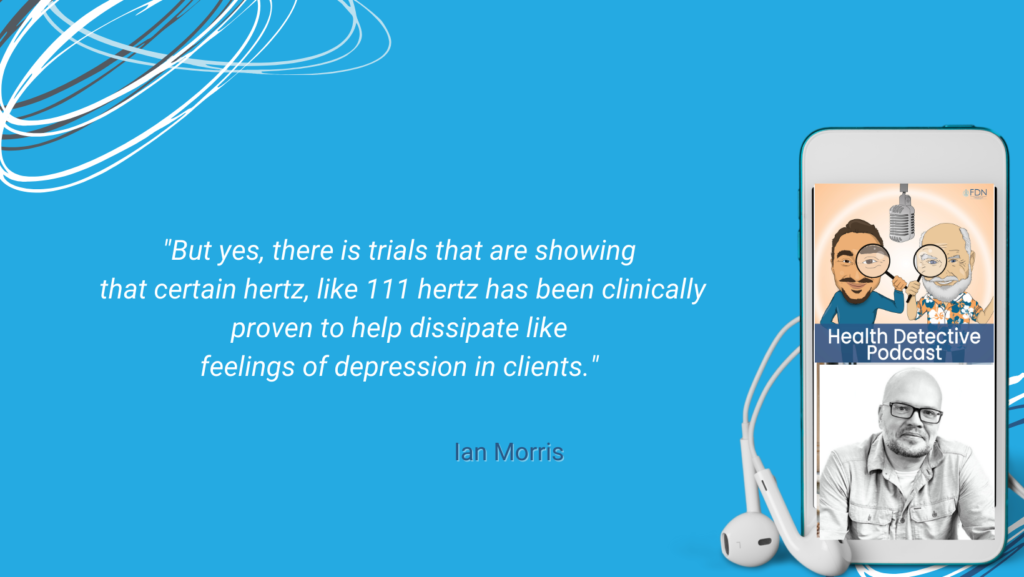
But yes, there is trials that are showing that certain hertz, like 111 hertz has been clinically proven to help dissipate like feelings of depression in clients.
Sound Healing Lowers Heart Rate & Brain Wave Activity
When you start working with these frequencies and incorporating them into meditation music, you’re already kind of engaging the body with these binaural beats in a way that really targets the stress response. You’re talking about lowering the heart rate, which can be proven through science. You have people that the brainwave state is changed to like a theta pattern, which is what we hit just before REM sleep.
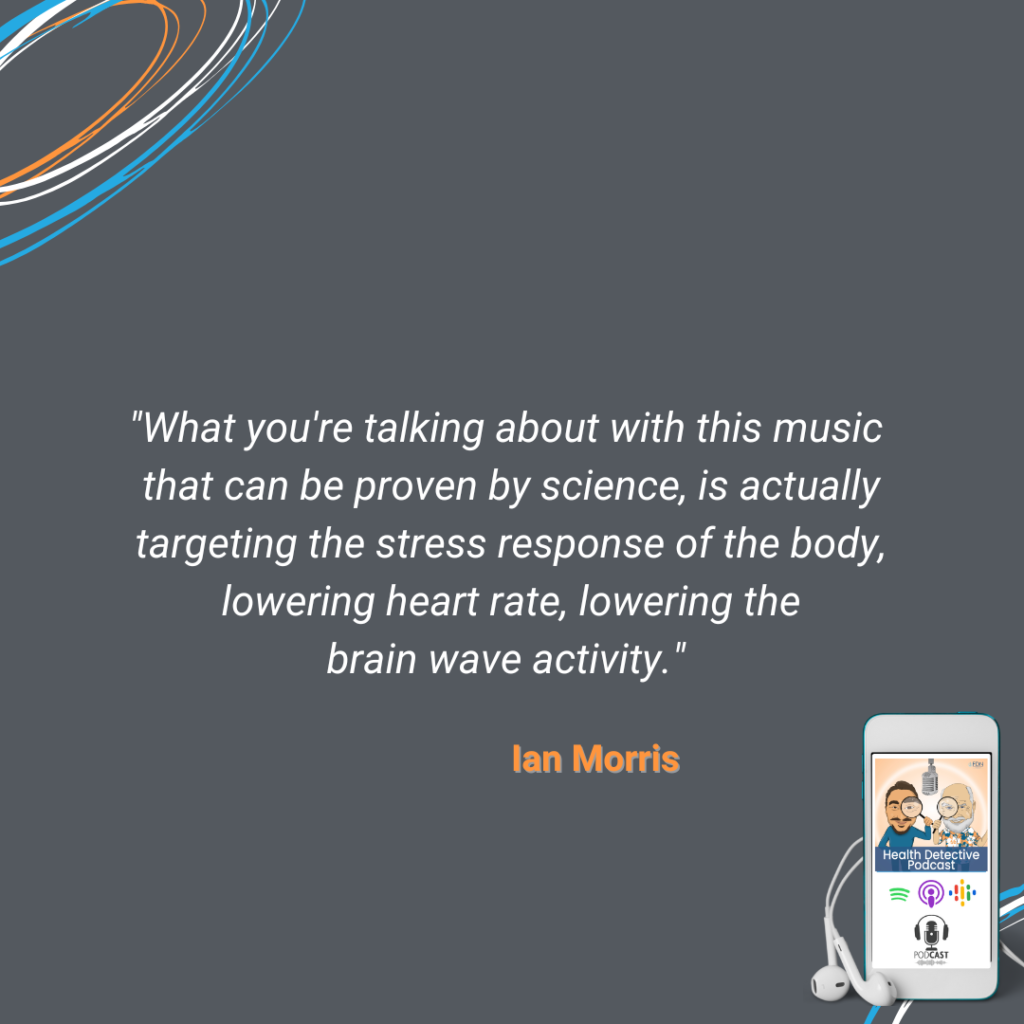
What you’re talking about with this music that can be proven by science, is actually targeting the stress response of the body, lowering heart rate, lowering the brain wave activity. Then you start working on a more personal level in like a coaching one-on-one situation where you’re really talking about creating new neuro pathways in the brain, creating new belief systems, new consistencies with the way a client talks with themselves, the way they internally speak.
It’s really rewiring stagnant energy and creating new belief systems through that interaction. You’re really talking about something that’s on a mental and physical level simultaneously. That’s cool.
[00:09:44] Detective Ev: We all have our little side passions in this world of holistic healing. For me it’s light. And it sounds like this is conceptually similar in the sense that there is really solid science going back from quite some time and now it’s almost like being brought to the light again. No, definitely, no pun intended with that one.
It’s being brought to the light again, so that we are now reexamining this stuff, and more and more is coming out. So, we already know it’s good. Possibly there’s sometimes that it’s working and maybe we don’t even fully understand why, but the science is going to catch up to this.
Sound Healing Quickly Quiets the Mind
I guess what I wanted to establish today is this is not woo-woo by any means. What you just said is already more than valid enough. Bringing in the binaural beats, I’m like, oh, that makes perfect sense. I’ve used those for probably almost nine years in meditation, right? Because it does, it helps calm you down and focus you rather quickly.
[00:10:27] Ian Morris: Yeah. I was working with a monk about three years ago. One of the things that he said whenever he worked with our music for about a week and a half, two weeks, he said, I spent 25 years working with my brothers on meditation and learning how to quiet my mind and to set myself up for these meditative states to heal my body and to go into deep meditation for spiritual enlightenment, et cetera.
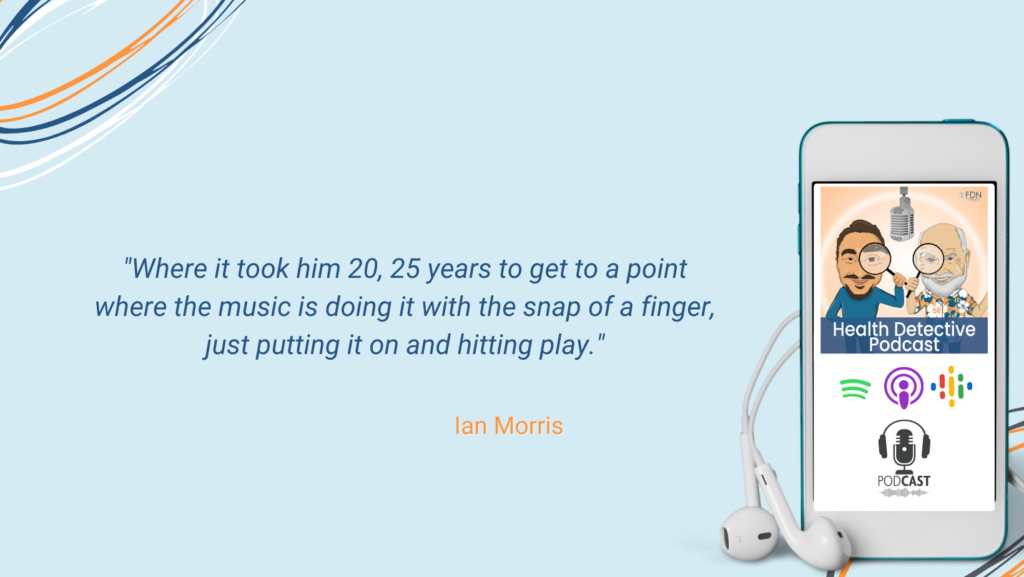
He was saying that when I put on the headphones with this music it’s doing it instantaneously. Where it took him 20, 25 years to get to a point where the music is doing it with the snap of a finger, just putting it on and hitting play. He said, within a few minutes, you’re already setting up into that state without any kind of conscious effort moving into that.
I think that’s what’s real important is there’s a lot of people out there that believe that meditation takes 20 years, and a lot of people are overwhelmed by that thought and don’t start the practice because it seems so overwhelming. I think that this is the perfect opportunity for practitioners to have an additional tool in their tool belt that can engage their clients.
Healing Is a Multifaceted Approach
It not only creates another point of contact where they’re interacting with that client, but it also is giving them a tool to use at home that really helps to create another facet of healing.
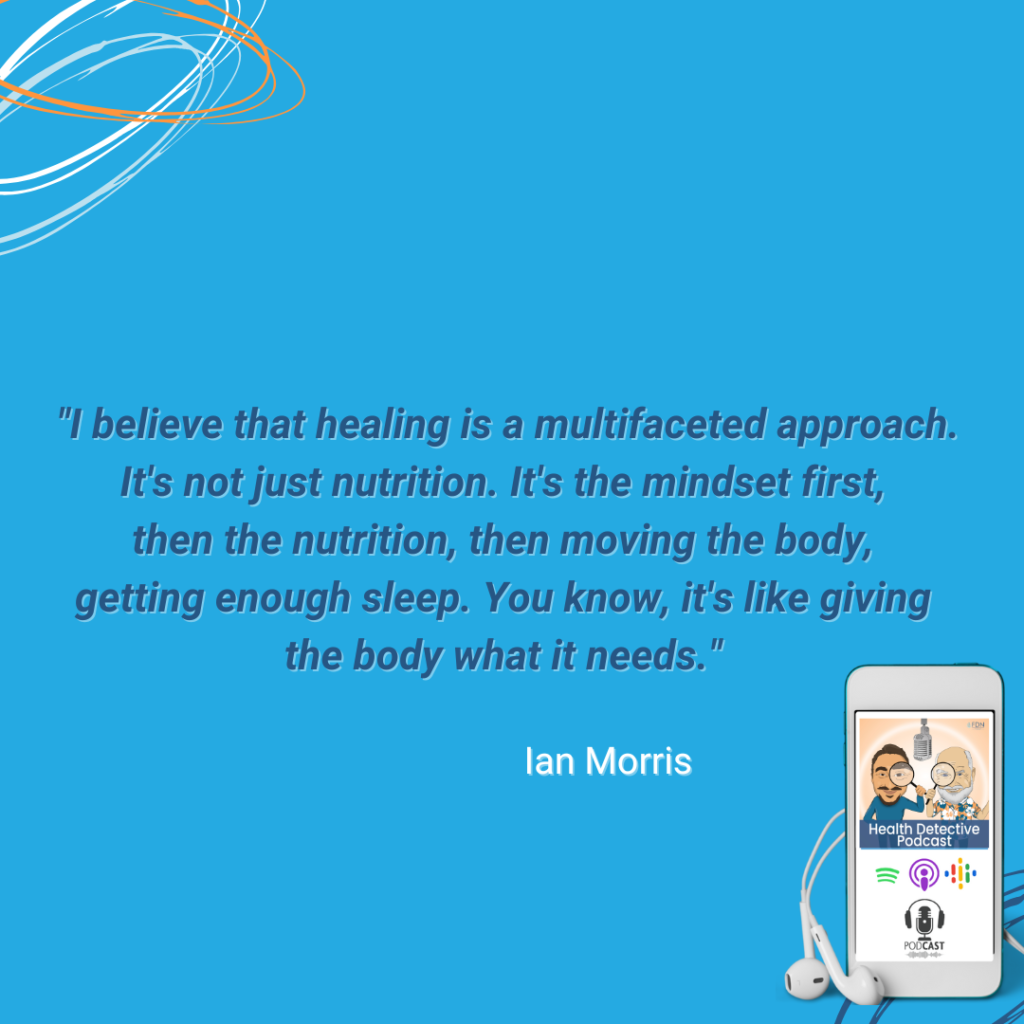
You know, I believe that healing is a multifaceted approach. It’s not just nutrition. It’s the mindset first, then the nutrition, then moving the body, getting enough sleep. You know, it’s like giving the body what it needs. So, it’s a multifaceted approach.
But I think this is something that helps get the mental game established where people can really get behind it from a mindset standpoint.
[00:12:09] Detective Ev: Awesome. And Joe, we’re going to bring you in here in just a second. I’m not leaving you hanging.
One other thing I want to know from you though, first please, Ian. I’m kind of curious cause I read your bio. Summarized as you want or as long as you want, it really doesn’t matter to me. I’m just curious about the background story and how this led to eventually LTS for you and forming these things. What were you even thinking when you had these diagnoses?
I don’t want to go too much into my normal podcast interviewing mode. I know we’re here to talk about other things today. But I gotta know what the story’s like. Like how did this all even come to be?
[00:12:35] Ian Morris: Well, growing up I had played sports my whole life, so I was pretty active. I played baseball and I was a pitcher. I played from T-ball all the way to high school.
When I was in about ninth and 10th grade, I started getting college scouts and professional scouts that were coming to my games.
A Dream Snatched Away
Most of my life I was told that I was going to play professional baseball from everyone around me. One day, I was running around the bases. I think that was in 11th grade and passed out when I was running the bases. I had hit a ball, was running. I was between first and second base and I just passed out.
Went to the hospital and they diagnosed me with mitral valve prolapse. Just said that there’s like a heart arrhythmia that I had, and the mitral valve prolapse were acting together.
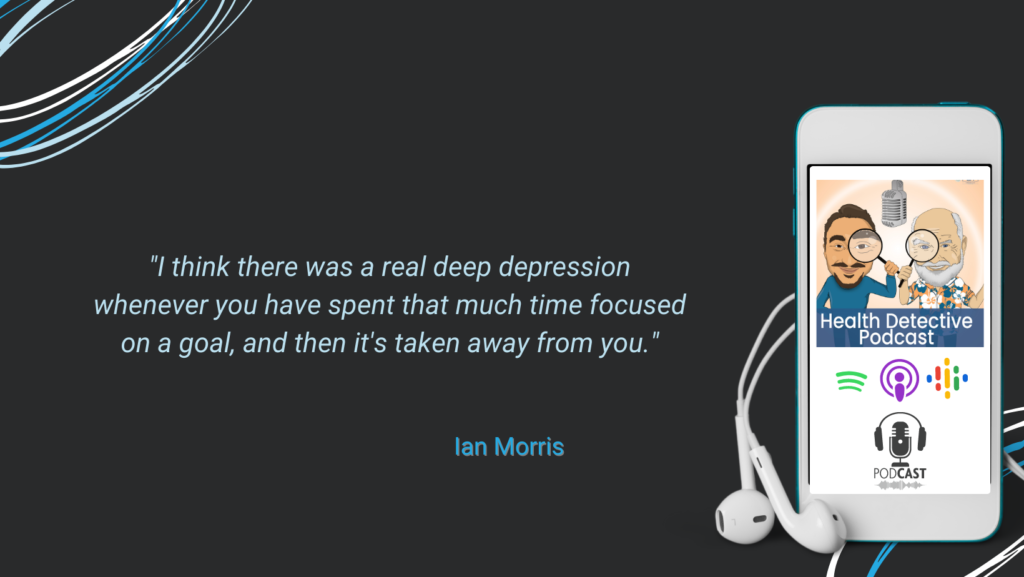
They said it most likely is not going to kill you. But when those happen together, then basically you are losing oxygen to your brain. When that information got out, all the scouts left. You know, everyone kind of was lost interest in me. I think there was a real deep depression whenever you have spent that much time focused on a goal, and then it’s taken away from you.
So, I started self-medicating, drinking and hanging out with not my normal friends, not the jocks or the sports guys, but the creative people, the drug people, and just party people. Started really self-medicating and there was a weight gain that started happening.
I learned to let go of the self-medication as far as the drinking and smoking and things like that, but I started eating differently as a crutch using food as a crutch and gaining weight. I think that it was a good 10 years of just depression and weight gain.
One day I started having these health issues and it took them about a year to get a real diagnosis. I was kind of bounced back and forth.
Sound Healing Helps Shift the Mindset
I was already a musician; I didn’t have health insurance. So not having health insurance, you don’t always receive the greatest of care.
It took about a year to be diagnosed and it was a very dark night of the soul. I read Louise Hay, You Can Heal Your Life. That was one of the books that came into my path. Then another one by Dr. Mitchell Gaynor called The Healing Power of Sound. Those two books just hit at the right time.
You know that eureka moment where I was like, I’m already musician, I could do this stuff. I started having the faith, like you said, moving into the belief that I could heal myself. It was from these books and this literature that really encouraged me to step into that.
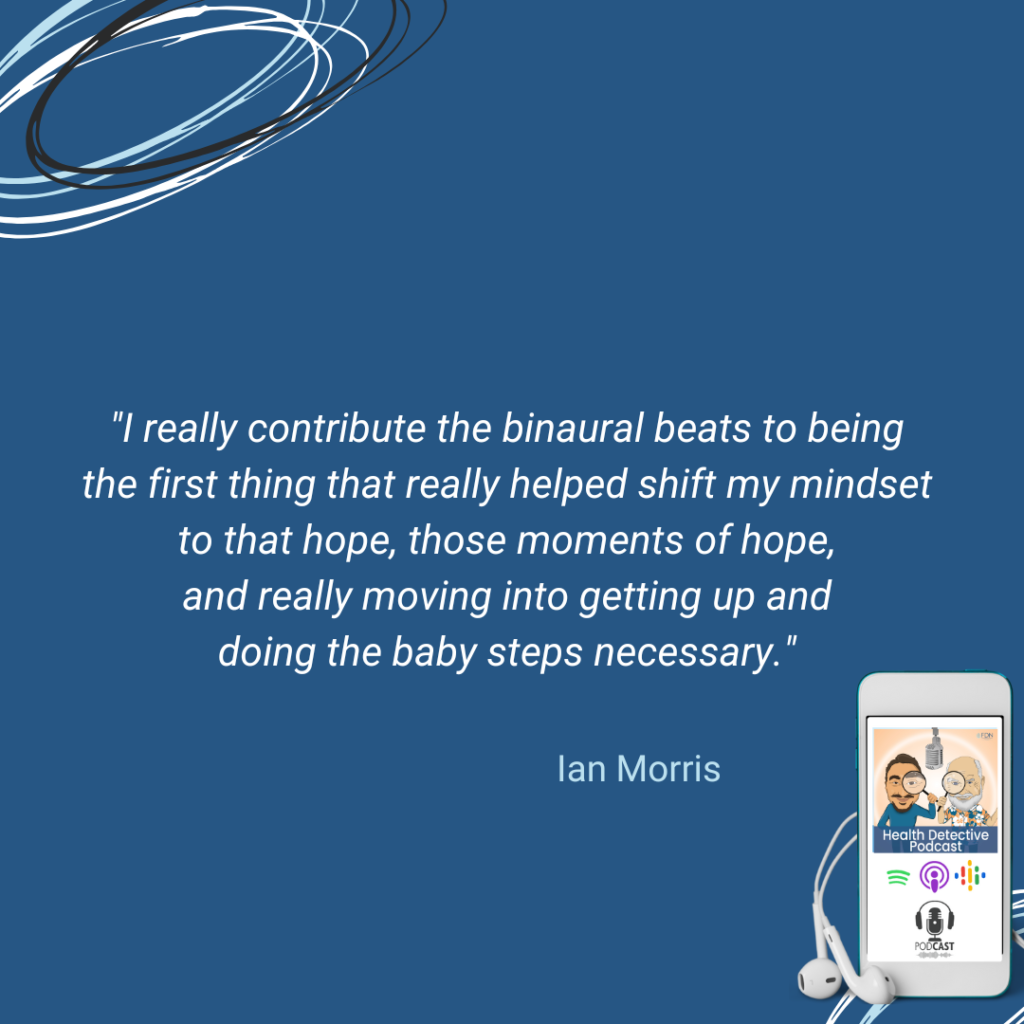
It took about a year and a half of really trying to rewire my mind, come out of that depression and that self-talk, that defeatist talk and that hopelessness that I was in. I really contribute the binaural beats to being the first thing that really helped shift my mindset to that hope, those moments of hope, and really moving into getting up and doing the baby steps necessary.
At my heaviest, I was about 320 pounds and just not in a great space. So, I lost over a hundred pounds the first year, started getting into breath work, meditation, and sound healing. Those were the first three things. Those things were actively progressing me forward to a point where I could start making better decisions about food, moving my body more than I was, and really learned a little bit more about sleep and the cycles that take place when we sleep for the filtering process.
Sound Healing Business Growing Internationally
All of that just brought me to a point where I started creating my own music through the encouragement of these books. As I started getting into the music and sharing it with people, they were like, this is what you did to lose a hundred pounds? I was like, absolutely.
It was something that just started growing into personal and friendships and family. They started seeing the same results that I was seeing, changes in their sleeping patterns, changing in the ways that they were looking at food, changes in the way that their body was responding. It was just something that was really encouraged.
It was never something I really thought about making into a business. But I had so many positive results and friends and family started having very similar that I was encouraged through so many friendships, like, hey, you need to share this with more people. So, it grew to yoga studios and holistic practices.
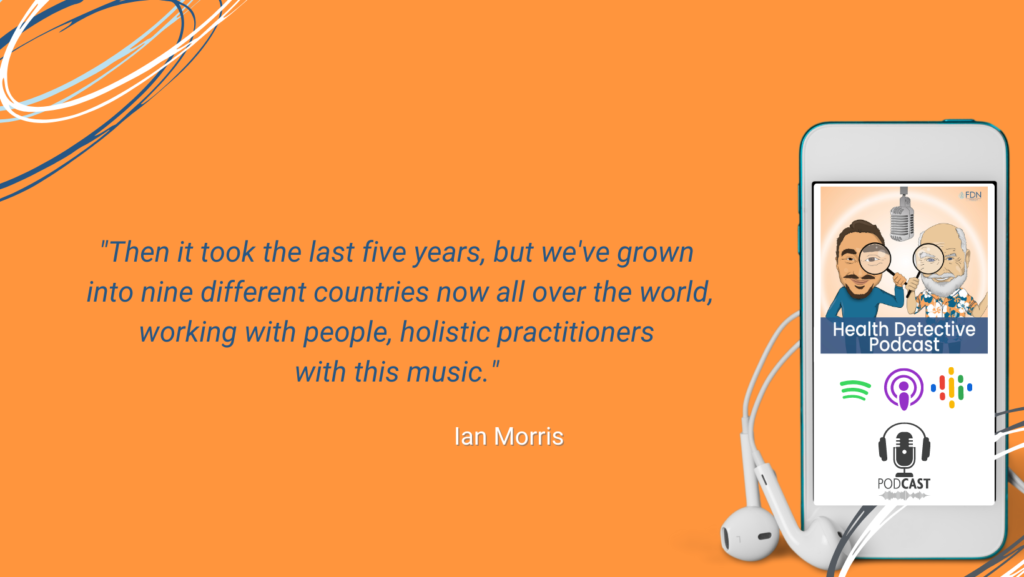
Then it took the last five years, but we’ve grown into nine different countries now all over the world, working with people, holistic practitioners with this music.
[00:16:44] Detective Ev: This is so cool. This is how the best businesses are started. I feel like this is just speaking our tribe’s language because no one gets into this space by accident.
I always make a joke. There’s no five-year-olds out there that are like, mom and dad, I can’t wait to be a Functional Diagnostic Nutrition practitioner. And I would assume there’s not a lot of five-year-olds saying, mom and dad, I can’t wait to get into sound healing. Like that’s where I want to go. Right?
Clif Bar Corporate Wellness Program
That’s what’s even cooler about these things. Because, if you’re doing it, it’s because you love it. It’s because you felt called to it and there’s something there truly for you.
So, Joe, I want to bring you in really quick too, to kind of combine this all together. How did you become involved with Ian, LTS? I’d love to hear any background about your story too.
I also think you had mentioned the Clif Bar thing when we were not recording yet. But that’s definitely something we need to share in the audience cause that’s pretty amazing that you’re doing that.
So, introduce yourself. Let’s hear about you.
[00:17:34] Joe Phillips: Thanks Evan.
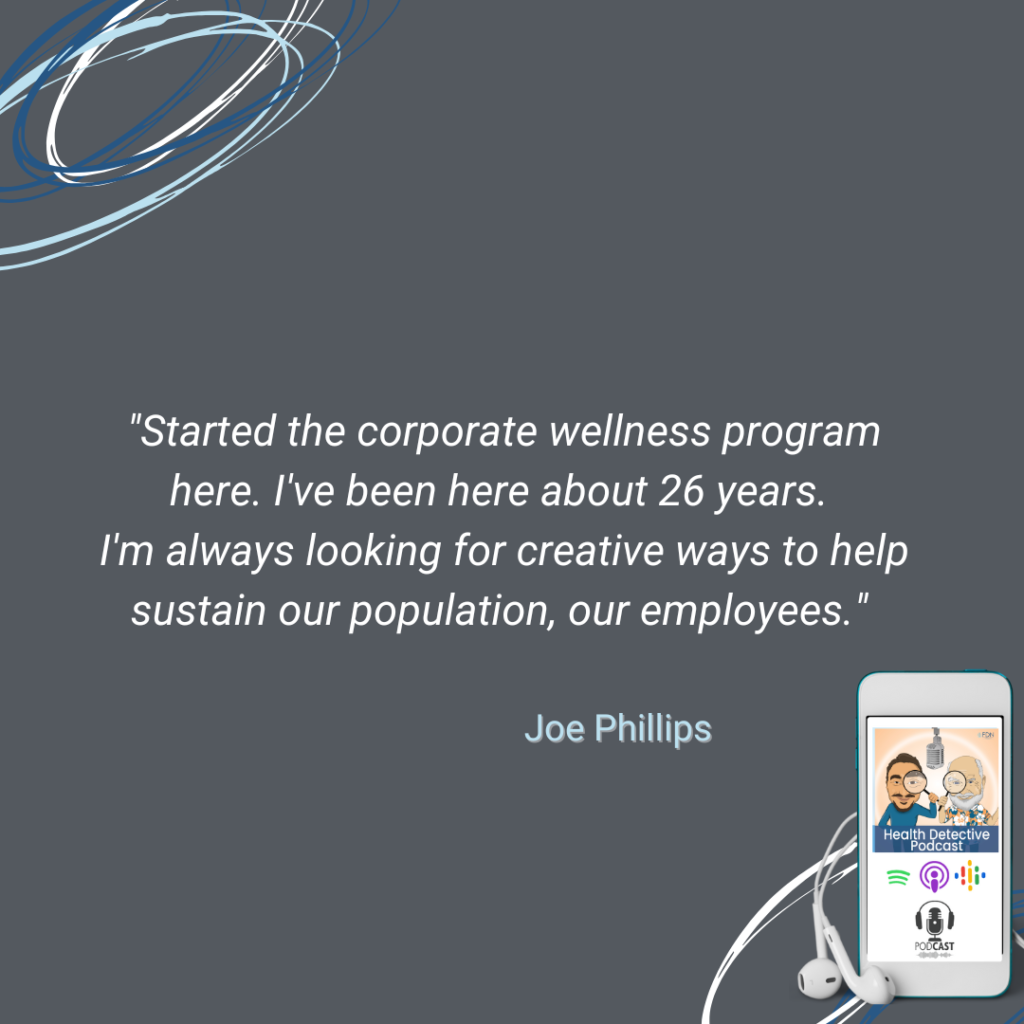
I’ve been at Clif Bar for quite some time now. Started the corporate wellness program here. I’ve been here about 26 years. I’m always looking for creative ways to help sustain our population, our employees.
I am a C.H.E.K certified instructor for nutrition as well as personal trainer, in addition to being an FDN. With our D.R.E.S.S model, our five foundational principles, I thought this would be a perfect opportunity to bring Ian into this conversation. But I also thought if I brought Ian into Clif Bar, since we’re doing so much, we already offer yoga. You know, we offer massage, physical therapy, acupuncture, all of that already. I thought, you know what? This is right up our alley.
I saw Ian being interviewed with Paul. I reached out to Ian, told him what I was up to, and he is like, yeah, we can work with you and do some stuff.
So, we’re in transition. We were just recently sold to Mondelez, parent company Kraft for $5 billion. There’s a lot of stress going on cause there’s a lot of uncertainty.
Sound Healing Does Much More than Mitigate Anxiety & Stress
I said to Ian, hey look, I know you do more than stress reduction, but I think we could really use your help. I lead Sonic Meditation Programs and use Listening to Smile for our staff. They found it very helpful to help relieve that stress and anxiety that’s going on.
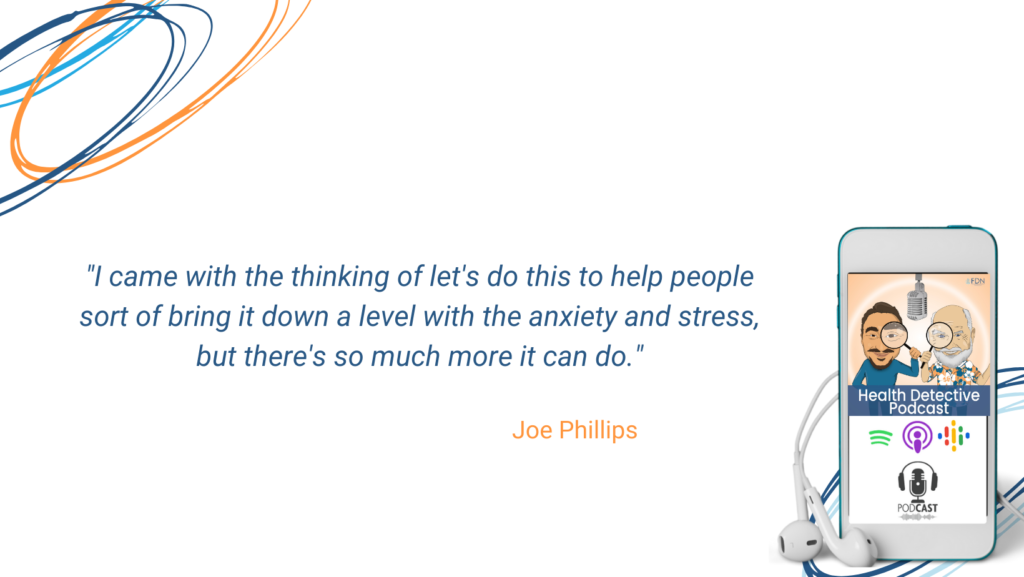
For some of the other folks, we’re actually using it for focus and productivity. I came with the thinking of let’s do this to help people sort of bring it down a level with the anxiety and stress, but there’s so much more it can do. We’re seeing some really great results and I wanted to share this.
I reached out to Jennifer and said, hey, I think this would be a great opportunity for FDNs to use this as a tool with their clients and show them. It ties right into the D.R.E.S.S model that we already use. So that’s how I came into this with Ian and FDN.
[00:19:40] Detective Ev: Awesome. And that’s totally impressive over two decades with a major company, right? It’s like something that literally everyone has heard of health space or not.
I can picture my dad even as he, I love him to death, smokes two packs of cigarettes a day, he would know this. He’d be like, that’s the stuff in the bike shops, right? You guys are everywhere. That’s really kind of cool.
One thing I want to just clearly define here. When we were talking about your story, Ian, I don’t know if we fully got this. So, Listening to Smile is what exactly? And for those listening, that’s what I keep referring to when I say LTS. That’s what that stands for. Just so it’s crystal clear, what is this and what does it do?
Using Sound Healing Ethically
[00:20:14] Ian Morris: Yeah, so I would define Listening to Smile as a unique sound healing company that specializes in music licensing. What that means is, we have a catalog of over 700 songs that are in frequency-based music, which means we have songs that are focused on body organs like the lungs, small intestines, large intestines, the liver, things of that nature.
But we also have binaural beats that are targeting brainwave states. We have music that is like, there’s 520 hertz, people will define as the frequency of love. So, we have music that’s created in the frequency of love. There’s everything from chakras, planetary frequencies, body organ frequencies, and then the human resonance and solfeggio scales.
We have a broad spectrum of frequencies that we work with to target different areas of focus. So, we have created this catalog to be used in these holistic ways. Life coaches, hypnotherapists, acupuncture, chiropractors, yoga studios, everyone’s using this in different ways. They make their own playlist; they create the music.
The licensing side of the business comes in where a lot of holistic practitioners use music in their practice in some form or fashion if they’re working with coaching, to pump them up for workouts or inspire them. People do guided meditations or tracks to help with sleep, things of that nature.
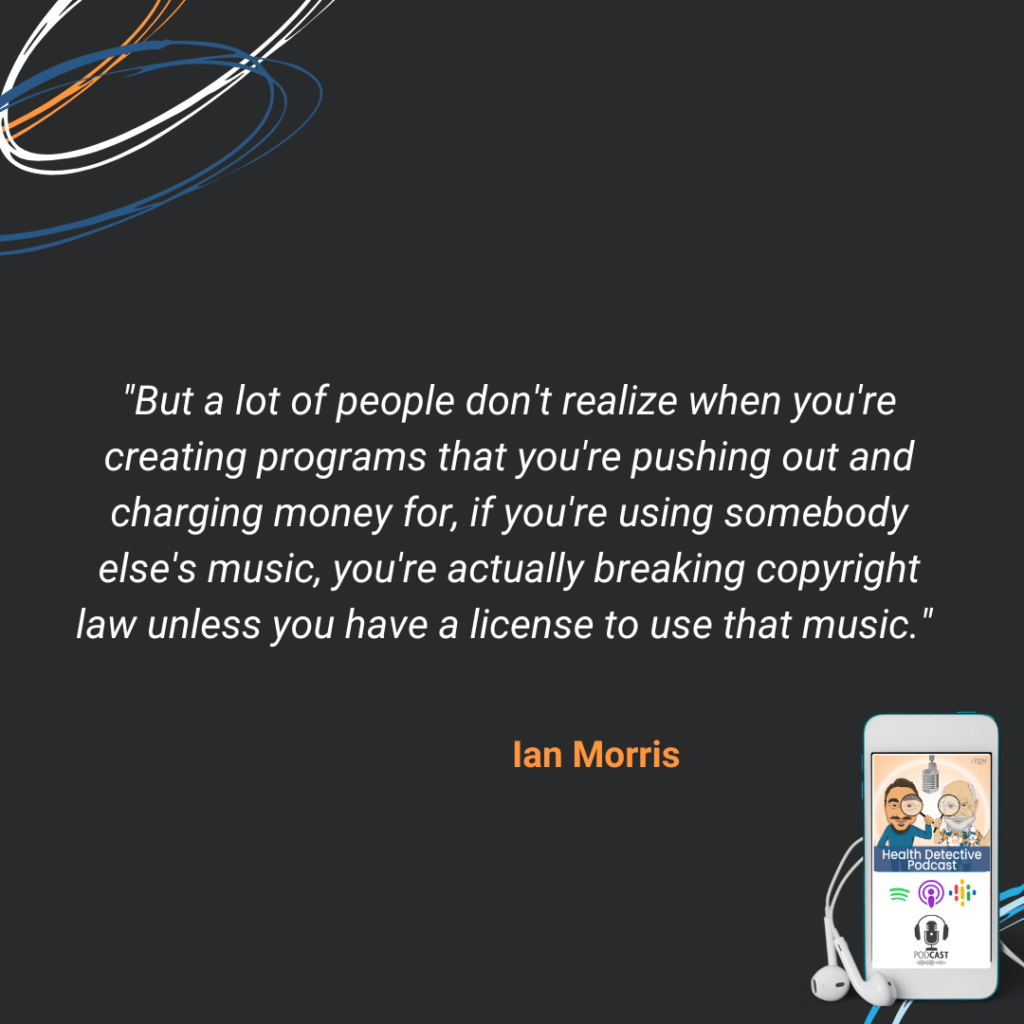
But a lot of people don’t realize when you’re creating programs that you’re pushing out and charging money for, if you’re using somebody else’s music, you’re actually breaking copyright law unless you have a license to use that music. So, we wanted to create something that was a new paradigm and licensing that was fair, but also creating more.
Using Sound Healing with Different Holistic Modalities
A lot of Spotify’s music I would not use in a holistic manner cause of the lyrics and the things it’s based in, the intentions. But that music as well as the tunings of the music are different. So standard music is in 440. Our whole catalog is in 444 and 432. 432 was concert pitch or the way that everyone tuned music in the original old school days.
As we’ve moved into this 440, there’s a lot of research and science that shows that standard tune music is out of alignment with the human body, plants, and animals in the way that our cellular growth happens. The frequencies of the music are different. The intention of the music is mostly instrumental and meant to be used in these types of applications, the way the frequencies are based for healing and release work.
Then you have this whole catalog that is now privately licensed to the practitioners and creating a multi-use license. What that means is they can use it in YouTube videos, social media, they can use it on podcasts, they can use it in all of those ways under this program.
They can also resell the music to their clients. Like if a yoga studio is hosting an event and people are like, man, I really love the music from today. They say, here’s a code, go make a purchase. If you purchase that album, you’re actually supporting the studio as well, because we’re getting a portion of that sale. There’s a lot of things like that.
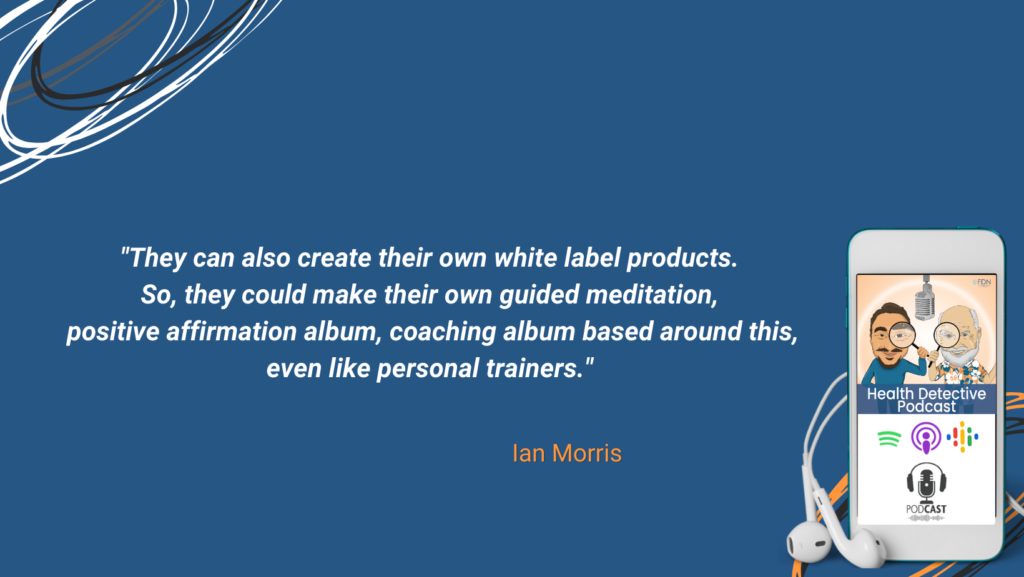
They can also create their own white label products. So, they could make their own guided meditation, positive affirmation album, coaching album based around this, even like personal trainers.
Sound Healing for Protected Multiple Revenue Streams
We’re even getting into working with chefs with intentional eating, conscious eating, and creating meditations around slowing down, chewing your food, having gratitude for what you’re taking in. It’s really changing people’s perceptions of where their food comes from, the ingredients of their food, and then also the intentionality behind their eating.
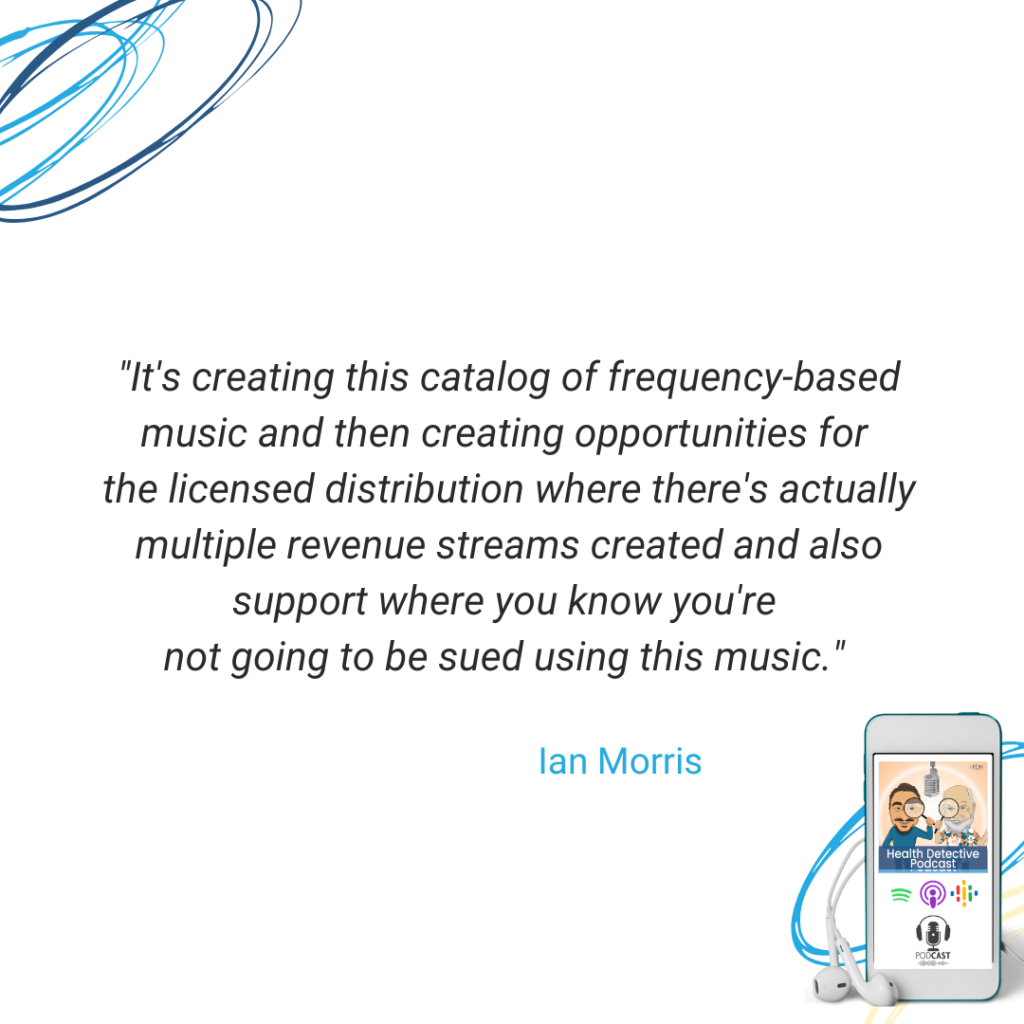
There’s so many applications that you can apply with this music, but it’s also creating more revenue streams for the practitioners as well. That’s really the focus of what Listening to Smile is doing. It’s creating this catalog of frequency-based music and then creating opportunities for the licensed distribution where there’s actually multiple revenue streams created and also support where you know you’re not going to be sued using this music.
[00:24:10] Detective Ev: Interesting. This definitely could be for you as well, Joe. This is, again, a major company. Lot of respect just in the world of business, let alone in the world of health and fitness.
I know this alone probably wouldn’t create the most insane testimonials, but I’m curious of the feedback. FDNs primarily are making the income off our expertise, right? That’s the primary thing. The supplements, the other things, they’re side things, which are great. It’s wonderful to increase revenue if we can.
But since the core comes from the expertise, we’re willing to add pretty much anything on, as long as we can see what it’s doing for people. So, I’m curious. Are there any cool stories that comes to mind if I was wondering what this has done that someone verbally gave some type of testimonial or came to you guys and said this was amazing. I think that’s what’s going to get our FDNs really excited about this and myself included.
Using Sound Healing in Quiet Rooms at Clif Bar and Company
[00:25:02] Joe Phillips: I’ll jump in really quick. Ian has some stories I’m sure as well.
At Clif Bar we created this program and it’s part of Ian’s affiliate program. He’ll share more about that in a moment. What I do in my practice is I have everyone check in and they get a scorecard on a scale of one to 10. They check in like where are they? Ten being the best ever. Zero, basically, you’re dead.
They’re checking in, saying, today I’m at a five. They’re coming into the studio, and we do our meditation. Then after our meditation, I ask them again on their scorecard, have they changed at all, or have they come up or down on the scale? Obviously, nine times out of 10 people are moving up.
I had an employee here actually move up five basis points in one meditation. She’s a little more skilled. But when she got into it, she’s like, wow. That really just brought me back down to a base level where I could just get quiet, really calm the body. This is a normal occurrence for us here at Clif Bar. It’s really cool.
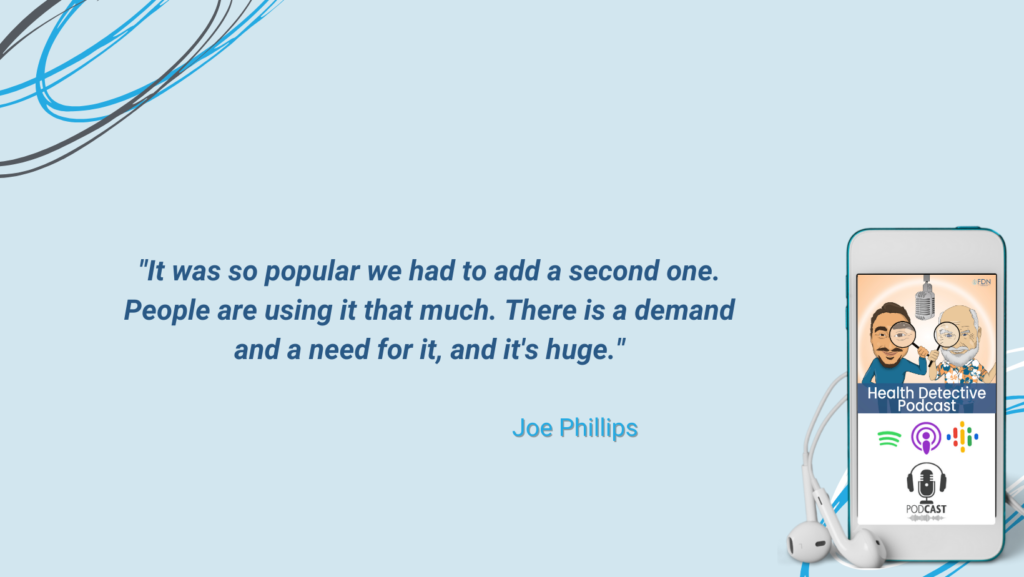
We have a quiet room where we use a BioMAT and we’re using Ian’s music in addition to the BioMAT. It’s paying huge dividends. Not to go off task, but that quiet room, people were teasing me about it in the corporate setting initially. It was so popular we had to add a second one. People are using it that much. There is a demand and a need for it, and it’s huge.
Sound Healing for Pain Relief
When we talk about stress, Ian’s done a lot of work with veterans from the military and has had great success. With that, I’d like to pitch it over to you, Ian, for you to share more about some of the stories that you’ve experienced with your clients.
[00:26:42] Ian Morris: Yeah. We have an album called the Pain Relief Album that really just targets relieving pain in the body through different frequencies that we’re using. A lot of the veterans that we’re working with have had three, four, sometimes five surgeries or more for some of their injuries.
The threshold and levels of pain that they’re dealing with are just probably more than what the average person could imagine. These guys are saying that these albums are helping them to get sleep and to actually relax the mind to even get into the point of where they could even begin to settle down into a nightly routine.
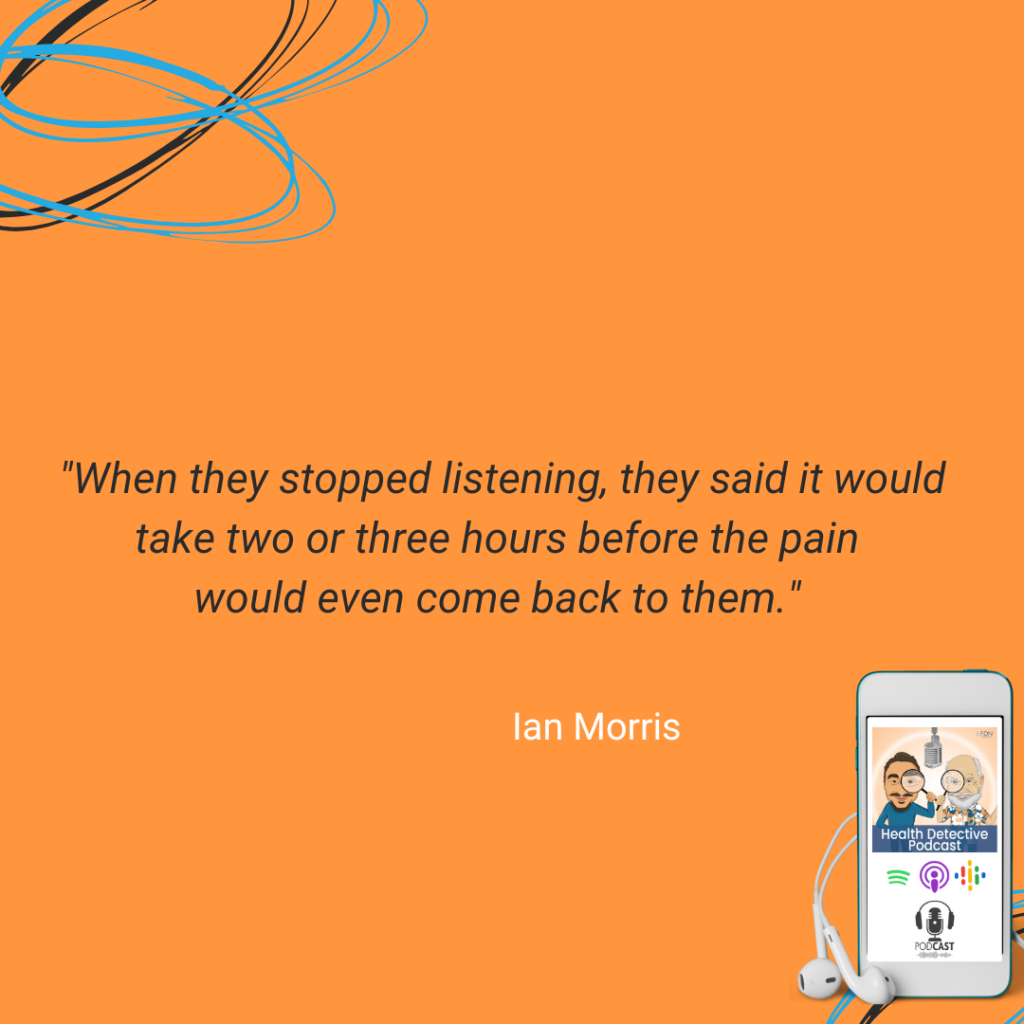
There’s even people that have given us video testimonials saying that it’s almost like they feel like the music helps separate them from their body for a moment where they are disconnected from the pain to that point where they feel like they’re almost hovering over their body. When they stopped listening, they said it would take two or three hours before the pain would even come back to them.
They were saying that this was a huge help for them to get sleep. A lot of them even listen to it for the duration of their sleep and helps them to do that. It’s just been really humbling to be a part of a process where people are using these tools in that capacity.
Sound Healing Client Testimonial
The last one I’ll say is probably one of the most noteworthy ones that I can remember in the last few years. There was a woman that took her music on her iPod or her phone into the dentist office and had a cavity filled completely, the whole process, procedure, done without sedative. She didn’t do Novocaine or any of that.
The dentist was so impressed that he called us asking to have a conversation about the music and wanted to learn more. He ultimately became an affiliate and started using it with his other patients because he was so shocked by that interaction. It’s been really humbling to be a part of that and to see it used in so many different ways.
When we started initially creating this, it was for one, two, or three different focuses that we were working on. It’s grown into such a broad spectrum of people really utilizing these in different ways.
[00:28:45] Detective Ev: That’s amazing.
[00:28:48] Joe Phillips: Evan, so to wrap up your original question, how can we use this as FDNs? This is another tool.
What separates us from other practitioners is our education, how thorough we are. But if we layer this on top of that, that makes us separated for sure. I mean, we’re very thorough and we’re looking at alternative ways to do this.
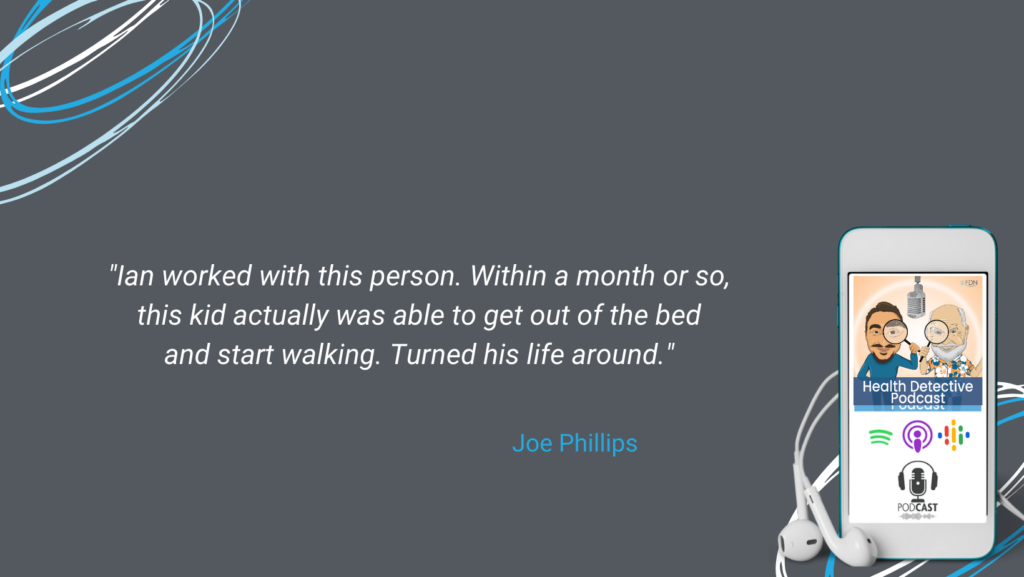
Ian told me one story about a woman that had a son that was very, very sick. This kid actually was unable to get out of the bed and was bedridden for quite some time. Had a very lengthy health history of problems. Ian worked with this person. Within a month or so, this kid actually was able to get out of the bed and start walking. Turned his life around.
Using Sound Healing to Take Clients to the Next Level
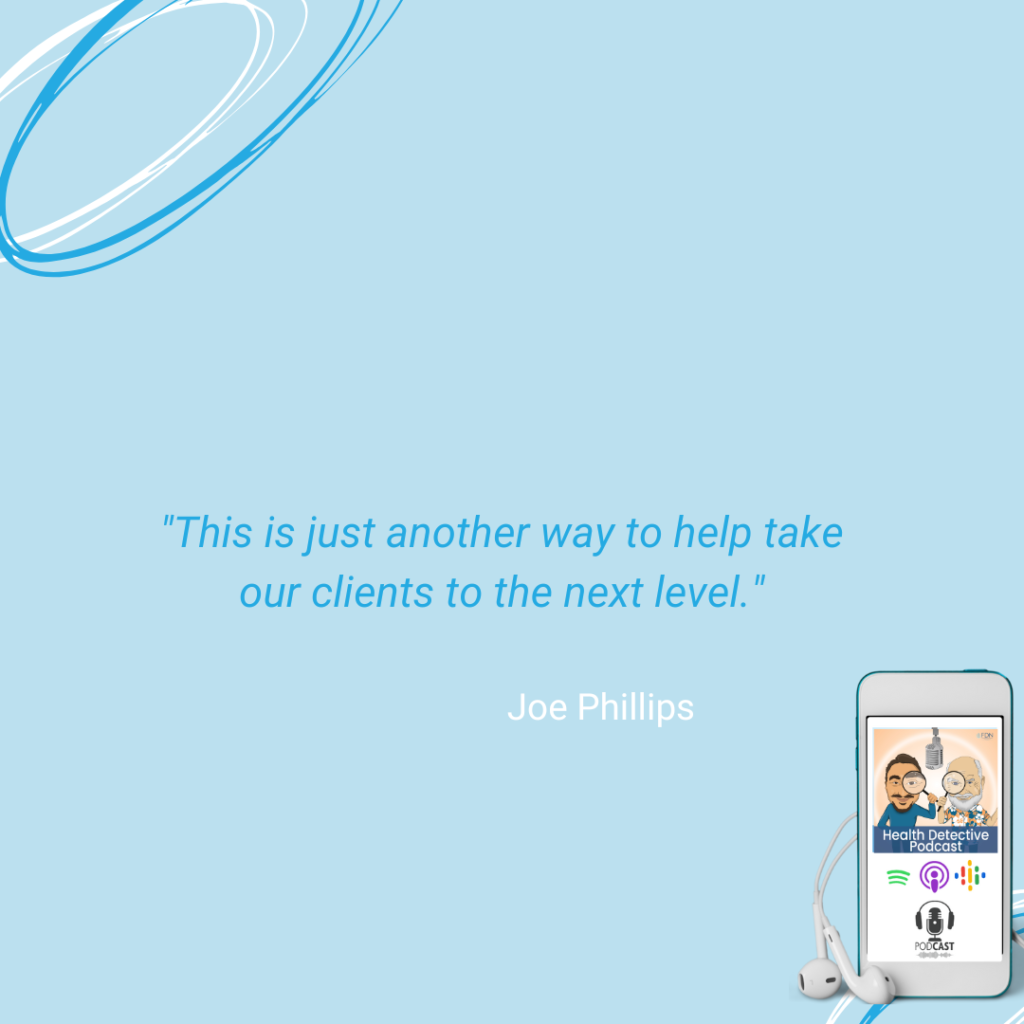
That, in addition to our lab work and what we do as FDNs, it’s huge. I mean, it’s the full package because I really do believe in D.R.E.S.S. It’s a five-pillar program. But we can’t look at just one. This is just another way to help take our clients to the next level. So, that’s how I would say you’d use it.
[00:29:52] Detective Ev: Nice. Well, this is amazing. Because like for me, I know we’re talking about the practical side now.
Then guys, for those that are on the Zoom, you’ll be able to have some time for questions here. It looks like that’ll be permitted. And if you’re on Facebook watching, I will check the Facebook comments. Just so you know, Zoom always gets priority, so I’ll go here first and then I’ll go to Facebook second.
But what I’m wondering, instantly I’m thinking about my girlfriend, business partner and I, we have this functional medicine studio that we started this past year. We do red light therapy and other things, but sound is always playing in the background.
We go back and forth with like just these generic YouTube tracks of like 60-minute meditations, which they’re great and all. But I’m thinking, wow, if I could do something more targeted and we’re going to play the music anyway. It’s a 40-minute treatment and all they’re listening to is the stuff that we have already. Well, this makes sense to me.
Then for the FDNs that are usually not working in person, they’re working online with someone else. Practically speaking, how does this work? What would it cost? I’d love to get into the logistics of it now.
Sound Healing: Listening to Smile’s Affiliate Program
[00:30:50] Ian Morris: The affiliate program for a single practitioner starts off at $777 for the year.
We have created a code, it’s FDN22 for you guys. By using that code at the sign up on the website for the membership affiliate program, they would be saving 20% off the program using that code.
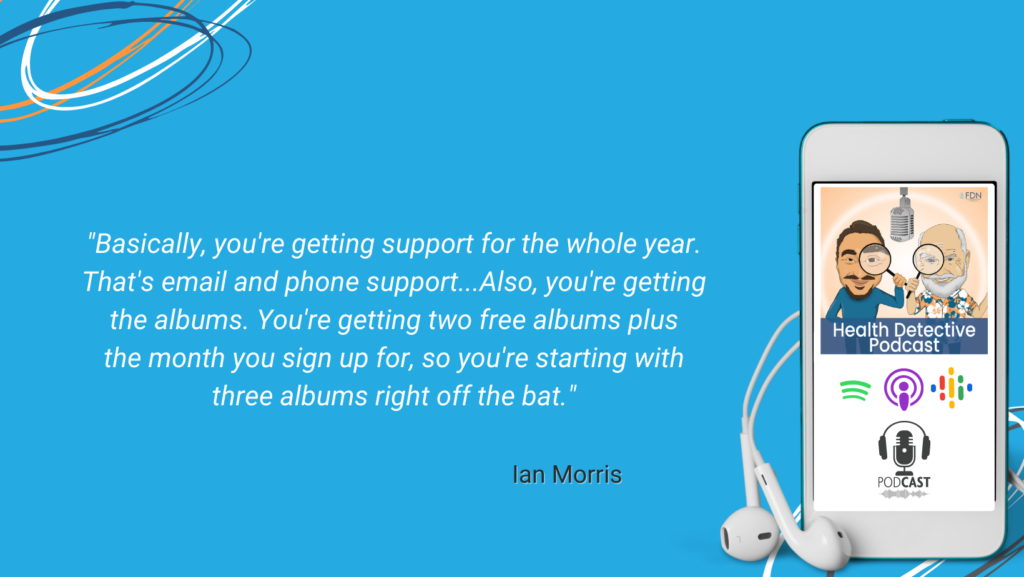
Basically, you’re getting support for the whole year. That’s email and phone support. If there’s questions like, you know, I have a client, this is coming up. What frequency should I use for this? There’s support in that way. Also, you’re getting the albums. You’re getting two free albums plus the month you sign up for, so you’re starting with three albums right off the bat.
Then every month you’re getting a new album. Those albums that are coming have information about the frequency so that you have full transparency to talk about this with your community or your clients and sharing the music that way. You are also getting the affiliate code.
So, now any kind of content that you’re creating on social media is now monetizable where you can say, hey, if you like the music in this video, or you like the music from this post, you can purchase using this code. They’d have their own affiliate code. Every post that they’re creating, any kind of social media podcast, any of that thing is now monetizable.
Then also working with clients one-on-one or in group settings, like a retreat or an event that you’re using the music in, if people are like, I really like that music, you can actually sell direct the music that way.
Needing the Permissions & License
Ultimately, have the goal where you could create your own white label, your own branded package of like guided meditations, life coaching, any of that kind of stuff as well. Basically, that’s what you’re getting for that price. Then also just the permissions and the license to use it in a commercial setting without worrying about getting sued from someone. A lot of people are like, what does that mean?
We were working at Carnegie Mellon two years ago. When we were there, a woman came up to us after the event. She ran a yoga studio; she had six yoga studios. She had 55 teachers working under her. She was getting sued for $155,000 from BMI.
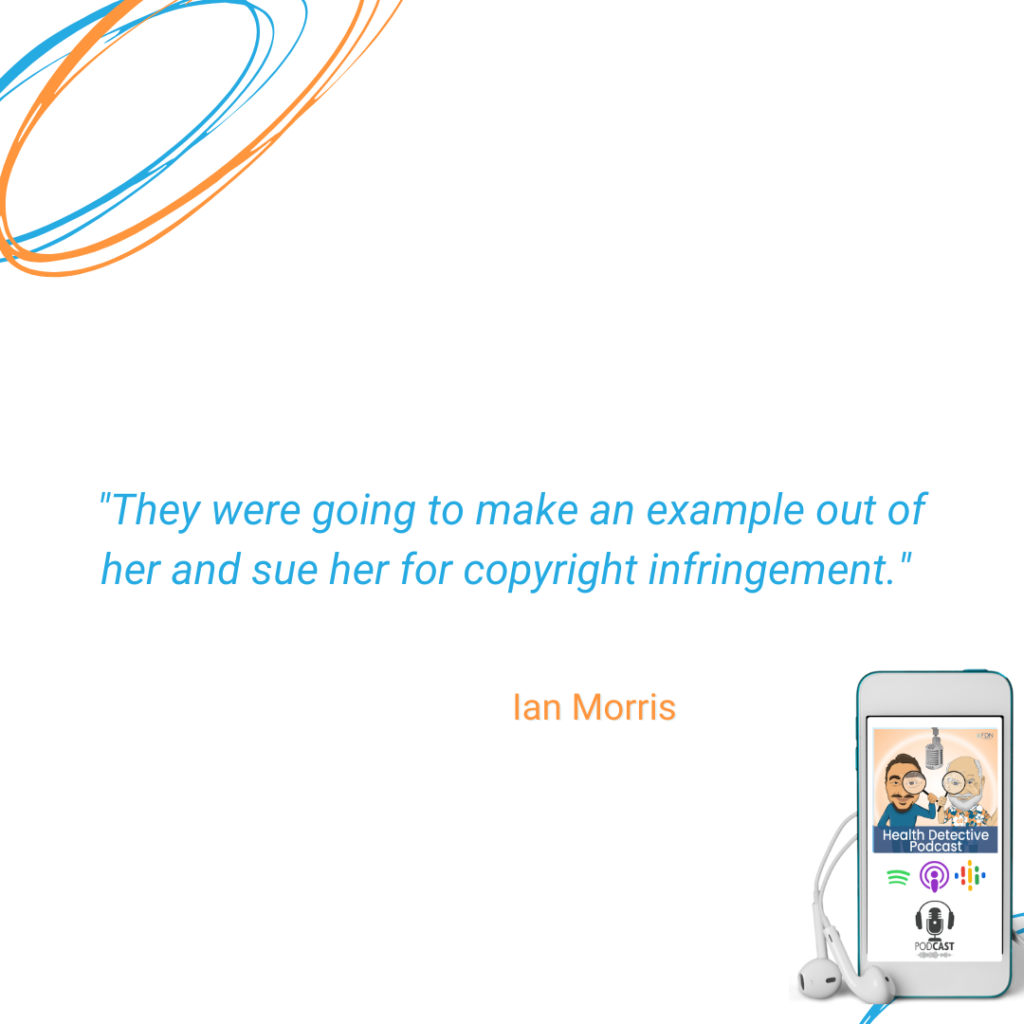
Now, BMI is a performing rights organization. A lot of people refer to them as pros. They sent someone in undercover and showed proof that they were using Spotify playlists without license in these classes. All of these teachers were using it at six different studios. They were going to make an example out of her and sue her for copyright infringement.
She was asking me, why pay the $10 a month for Spotify? I said, you do, but that’s for you personally, for your car rides or you at home. It’s not 55 teachers at six different locations using your sign in to get in there and use this music. She said, well, I don’t understand.
I said, okay, let’s flip it. I said, let’s say I took a music video of mine and I put your yoga class in there, made it to where your beauty, your flow, your demeanor, your personality engaged people in this video. And I was making money off of every stream that came through.
Careful to Do Business Ethically
Let’s say it racked up a million streams or 2 million streams. If you saw that, would you not be upset? She goes, yeah, I would be upset. I said, well, that’s how musicians feel when you use their music without permission.
I said, another way to look at that is like if Trump or Bill Clinton or some president uses a song for their campaign trail, and they don’t ask permission. Then the musician disagrees with how that person is choosing to promote themselves, what party they stand for, what their morals are. The musician wants the right to say, hey, I don’t want my music associated with that lifestyle.
I was like, these are the kind of things that come up as why this is important. You want to be in integrity as a business owner, to be in integrity with your business, and move forward in a positive fashion and attract like-minded positivity to your practice. This is just another extension of that and all of us have to think in those ways.
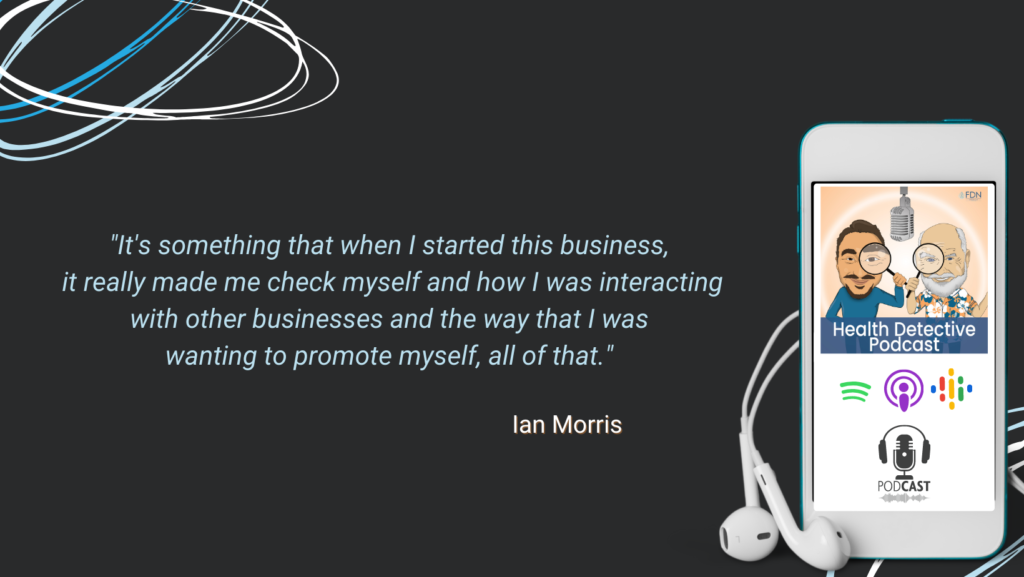
It’s something that when I started this business, it really made me check myself and how I was interacting with other businesses and the way that I was wanting to promote myself, all of that. I think this is the new paradigm of business as a synergistic, you know, giving.
One of the things I’ll say to close this is in the back end. Let’s say someone from the FDN network becomes an affiliate. One of the things that’s really neat is if another practitioner that they interact with comes to one of their classes or workshops and says, man, I really like the music you’re using. I want to use that in my practice. If they sign up, we have gratitude payments.
It All Comes Back in One Way or Another
So, if someone signs up, it’s not like a multi-level marketing, it’s not something you have to do. But if the opportunity presents itself and someone signs up for our program through that interaction, they will actually get a kickback for every person that signs up. And if people buy albums, they get percentages of every sell. So, there’s always a synergistic give and take on this. I believe that this is the new paradigm of business moving forward.
[00:35:40] Detective Ev: All right, cool. Well, what you just said about the Spotify thing too, I think this is something that most of us don’t think about.
I won’t admit it live on a camera now, but I’m assuming at our studio we probably do use Spotify sometimes. I would guess YouTube’s fine cause it’s free and I could sit there and watch it with three friends. I don’t think that’s an issue. But the Spotify, I think, yeah, it’s actually a really good point.
Obviously, I’m assuming this yoga instructor, this was totally innocent and not with malintent. But yet you don’t even think about it. It’s like, well there’s 55 instructors, there’s a bunch of people in the class. The potential that that should be is worth way more than a $10 subscription per month from one person.
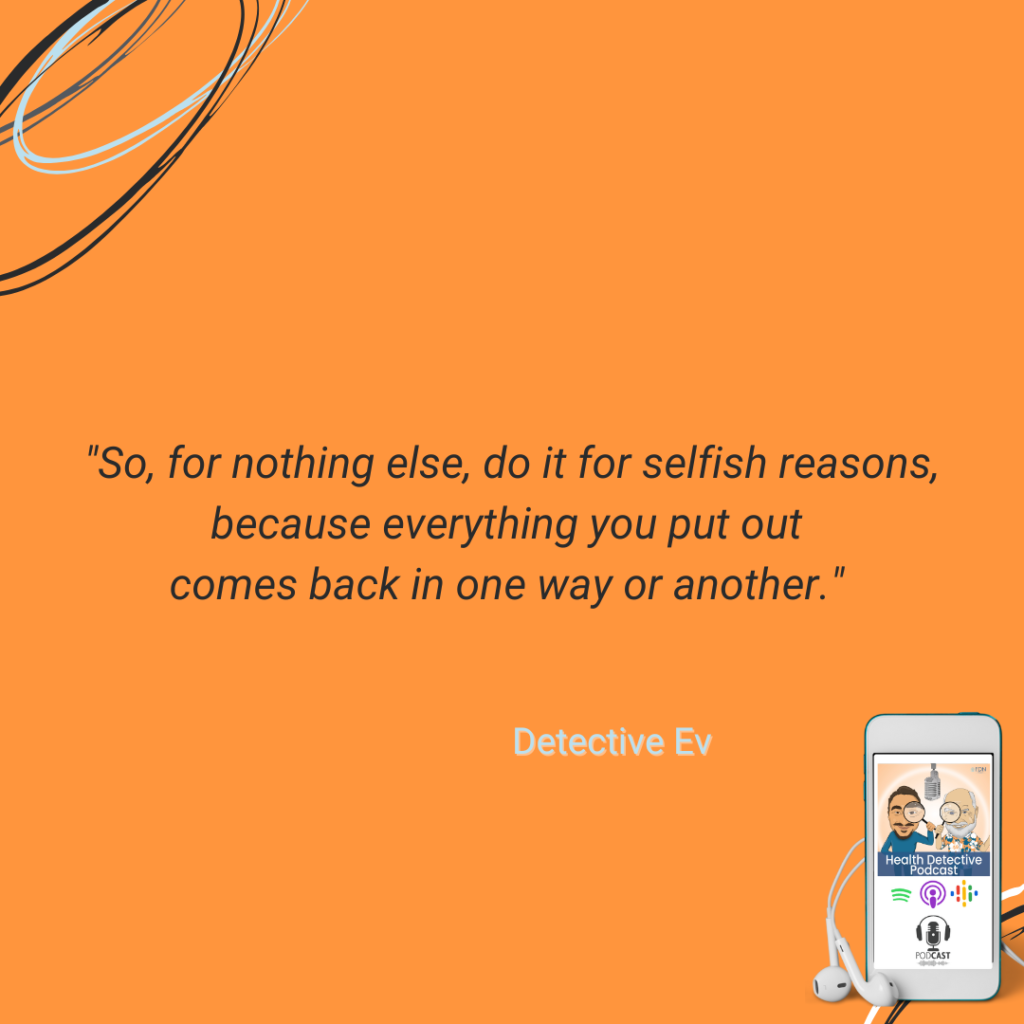
That should be like $550 just from the practitioners and then all the people. That’s a very fair point. I think if nothing else, and I feel like our FDNs think like this. That’s just the moral thing to do. You always do good in business because it all comes back anyway. So, for nothing else, do it for selfish reasons, because everything you put out comes back in one way or another.
Exclusive Sound Healing Albums
So yeah, you can go use someone else’s stuff now for free, but I guarantee that’s going to come back in some other way. So, you might as well just put the good out.
If anyone has questions, I think we’re probably safe to start asking some of those. Please, our friends online, you can either raise your hand or you could type something in the chat. It is up to you.
I definitely will have some other questions if nothing else, but I want to give these guys a second. And I’m going to check Facebook as well.
While we’re waiting then, my first obvious question is for Joe or Ian. Is there anything today, questions aside, that maybe we still need to touch on that maybe we just didn’t naturally get to?
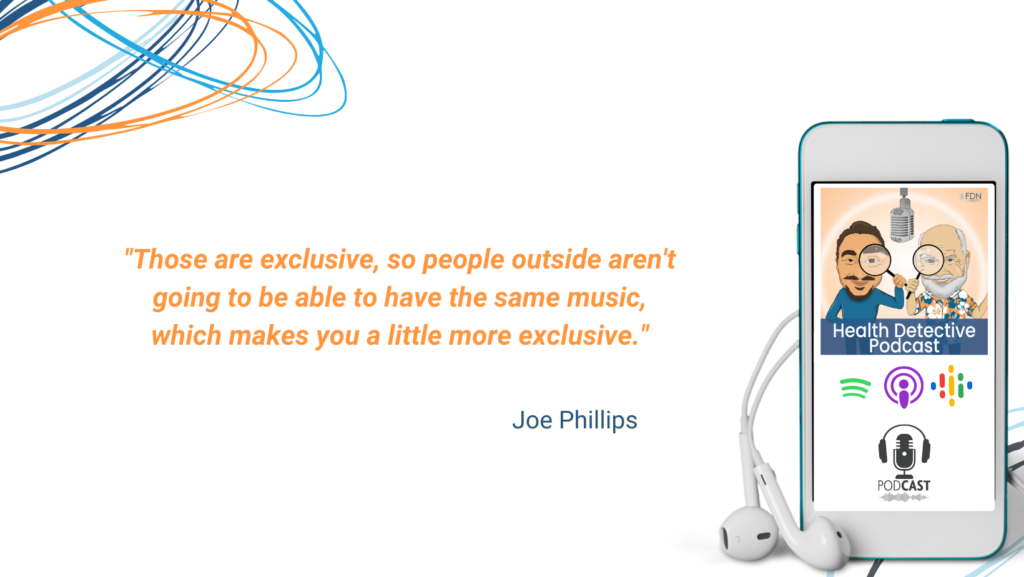
[00:37:06] Joe Phillips: I did want to say one more thing. Ian forgot to mention that every month he makes new albums. These new albums are exclusive for the affiliates. He has a library that you can buy and certain albums you can buy. But the affiliate program, it’s really cool. In addition to, as he mentioned, the information that goes along with each song, those are just for affiliates. Those are exclusive, so people outside aren’t going to be able to have the same music, which makes you a little more exclusive. I just thought I’d share that.
[00:37:39] Detective Ev: Very cool. I see the hand raised and I will get to you in just a second.
Michelle asked in the chat, she said link for music.
Michelle, correct me if I’m wrong, I’m guessing she meant maybe there’s like a sample of something that’s available somewhere to check it out.
Where to Find Ian Morris & Listening to Smile
[00:37:50] Ian Morris: So listeningtosmile.com, there’s samples of the music that you can listen to and there’s also more information that you can find out to read more.
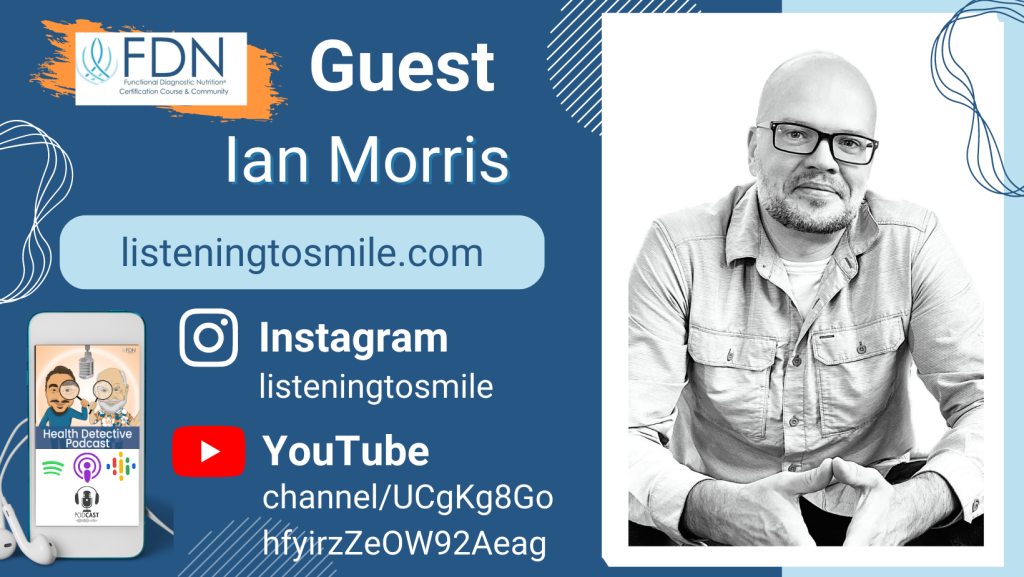
The links to the membership program at the top of the page, it says Sign up. Then right beside that you’ll see Services. In the services there’s a membership that they can click on, fill out the form, and sign up on the website. Right before they get to the sign-up link, there’s more information that they can learn.
Just all the things that they get is kind of laid out on that page, the membership page on the website. So just listeningtosmile.com. At the top there’s services, and you’ll go to the membership service. Then it gives everything there, sign-up link and everything.
[00:38:29] Detective Ev: That is a wonderful name. Because it’s always tough when you have a business that it’s not easy to remember. But listeningtosmile.com, that’s about as easy as it gets.
I just put that in the chat for everyone. I would assume that you guys could spell that, but you know, it’s nice to have. Thank you, Michelle, for the question.
If anyone else has one, drop it in the chat.
But I also see a hand raised and it is from one of my favorite FDNs, Mary Ann. Hello, Mary Ann. How are you? Hi.
[00:38:52] Mary Ann: Thank you. I have a question because I have a client who is having weight problems. I know you mentioned, Ian, that you had weight issues and music was part of it. Can you explain what you were doing with music that helped with that weight loss?
Sound Healing Facilitating a Joy of Emptying Out
Ian Morris: I was grieving. That’s the simplest way to put it. Yeah, I was 320 pounds, and I was using food as a crutch. I was getting those dopamine hits, chocolate and sweets and all the stuff to get through the day fighting the depression.
What the music did, I think it was the first time I can ever really remember sitting with myself in peace. I remember the first time that happened with the binaural beats, tears started streaming down my face. I wasn’t grieving, like I wasn’t crying, but it was just tears pouring out. It was really a sign that my body was craving that sense of pause that I wasn’t giving it.
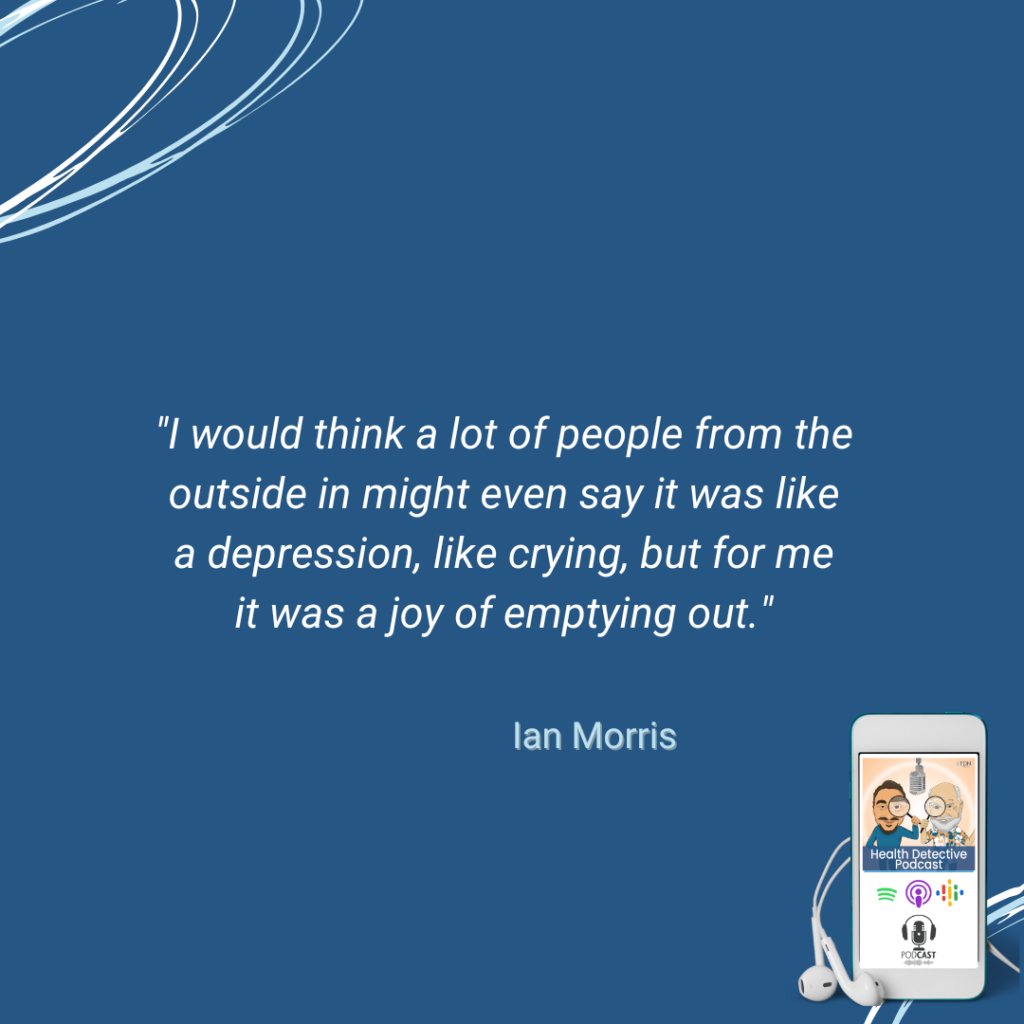
So, when I started grieving, I started feeling the chemical changes in my brain and my body. I would think a lot of people from the outside in might even say it was like a depression, like crying, but for me it was a joy of emptying out.
I think a lot of that weight was padding that I was putting on to protect myself from myself and the world and just that whole interaction. There was a reel, I believe, creating new neuro pathways through using the frequency of 528. 528 hertz was the frequency of love. It’s what I really felt drawn to the most.
I’ve since used it with other clients that had weight issues and it seemed to really help. Now, it’s not just going to be the process of listening to the music. They’re going to have to interact with you on other deeper levels and facets to create that. What I mean by that is, I was asked on a podcast one time, what is the first step for healing? I said, number one is mindset.
Sound Healing Assisting in Emptying Grief, Pain, and Trauma
I believe that the music was helping me with the mindset of looking at my life differently from a new perspective that I was unwilling to before.
Then what happened is through the new perspectives, I started thinking like, I don’t want to be fat and overweight anymore. I don’t want to be miserable to move and depressed all the time. So, I had to make better choices with food.
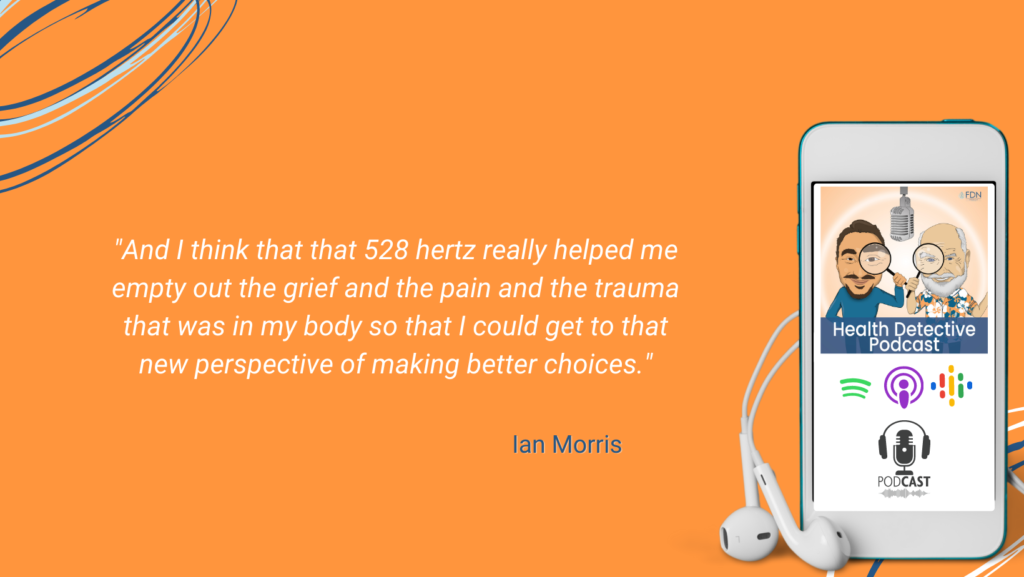
I actually started reading books about nutrition and food and food combinations, things that I was unwilling to read before. That was a start, was the mindset. And I think that that 528 hertz really helped me empty out the grief and the pain and the trauma that was in my body so that I could get to that new perspective of making better choices. That was really reading first and educating, and then putting into action.
I think the music was my support the whole time that I was doing that.
Mary Ann: Thank you so much. I think that’s really a great testament to what you were going through. I know some people that probably are holding on to some of that stuff too. So that’s really helpful. Thank you.
Ian Morris: Yeah, no problem. Thank you.
[00:41:52] Detective Ev: Cool. Thanks for the question, Mary Ann.
Next up we have Naomi. Hello. Hello. You are good to go. Please ask your question.
[00:41:58] Naomi: This is really fascinating. So, you might have mentioned this and maybe I missed it. But with the membership, is there also guidance for us or is it more the access to the music?
Creating Sound Healing Playlists that Fit Your Clients
Ian Morris: So, you guys will each get an orientation. It’s a Zoom call and you’ll get also a PDF orientation. Then from there you have support for the whole year. And then every month that the albums come, there’s information that kind of leads you with where these frequency tracks would best be utilized.
Naomi: Oh, okay.
Ian Morris: But the thing that’s really neat is that you get three albums when you first sign up, and then you get a new album every month for the rest of the year. So, it’s a one year. You would have to renew the next year to utilize the music in that commercial setting again.
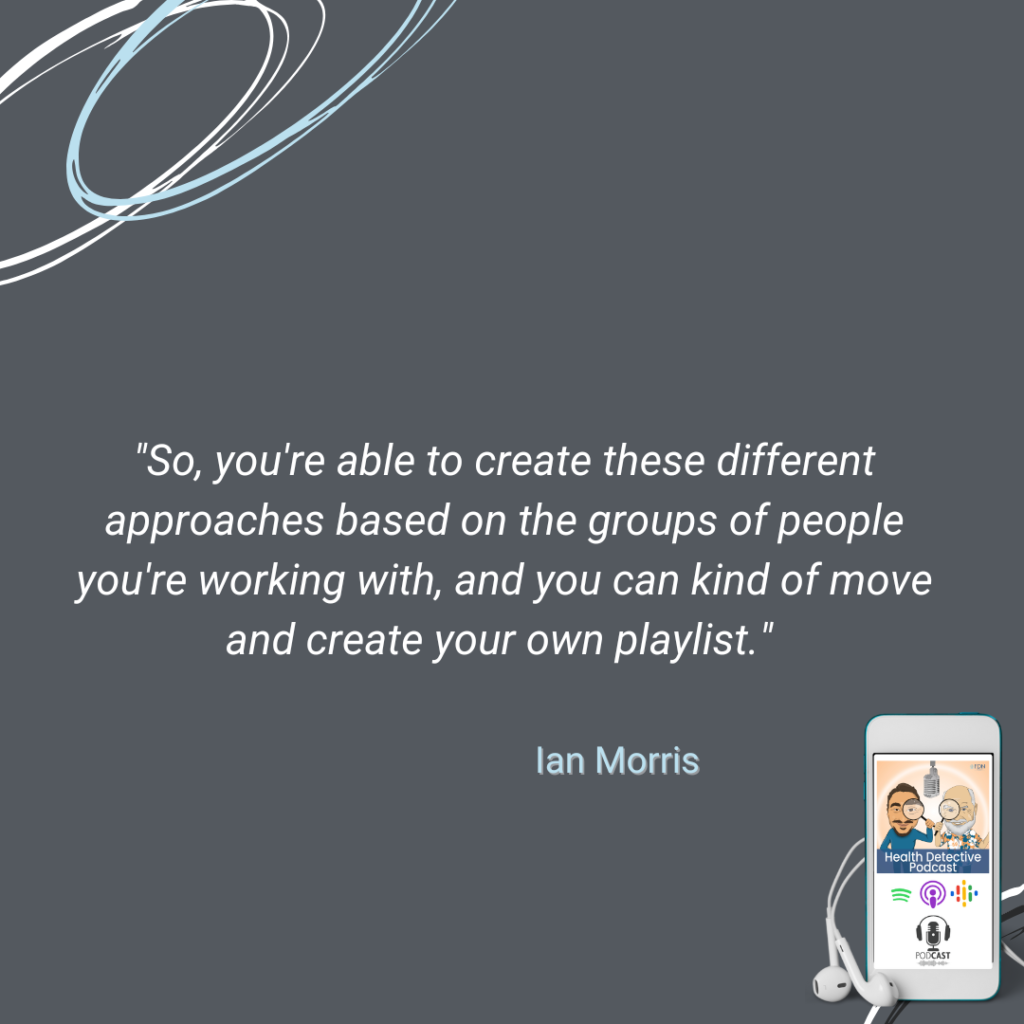
It’s a one-year membership. Then in that you’re also able to create your own playlists. So, if you have a group of people that are more movement based, you might want more mid-tempo and upbeat music in that setting. If you’re working with a meditation group or creating something for sleep or pain relief, you probably want more meditative tracks. So, you’re able to create these different approaches based on the groups of people you’re working with, and you can kind of move and create your own playlist.
The last thing I’ll say, the reason why I like the affiliate program is that these songs, like Joe said, they’re only available through the program. They’re not out on Spotify or YouTube, so no one has contact to these tracks. So, when they first hear them, it’s their first experience. It’s not like they’ve heard something before, and it could be a trigger.
New Sound Healing Albums Every Month
I heard one time, there was a girl in a yoga class that shared with me, she said, I really like my yoga instructor, but she uses all this music that I listened to with my last boyfriend. Every time she plays the track, it brings up all this bad mojo for me. So, I had to quit going to the class.
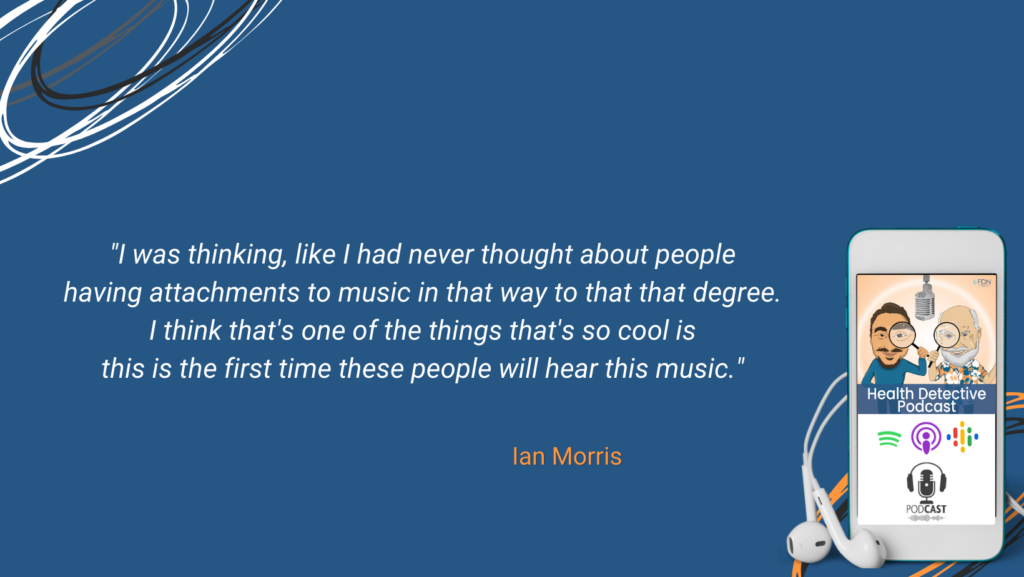
I was thinking like I had never thought about people having attachments to music in that way to that that degree. I think that’s one of the things that’s so cool is this is the first time these people will hear this music. And the fact that there’s always new music every month, it keeps it fresh, and you can work with different music in that way.
Naomi: That’s cool. Then just to clarify, if we were to join and then next year, it’s new albums and everything that are released monthly, but do you still have access to the year? Or you need to continue to have access from the previous year?
[00:44:15] Ian Morris: Yeah. You’ll have personal access to the music. You get to keep the music. But to use again in a commercial setting, you need the license to do that each year. Yes.
Naomi: Got it. Thank you.
Ian Morris: Yes, no problem.
[00:44:27] Detective Ev: Very cool. Thanks for the questions. Guys, I think this is going to be your last shot, so if you have any questions, you can raise your hand or drop it in the chat.
Okay. Naomi asked again, what was the discount code?
[00:44:37] Ian Morris: fdn22. The year 22. So fdn22 and that gets 20% off.
Having a Set Standard of Sound Healing for Clients
[00:44:43] Detective Ev: Great, thank you.
This woman, she’s really cool, her name’s Liz Georges. She commented to us on Facebook. She said, this is really interesting and exciting. I’m definitely sharing this with a couple healing centers nearby.
[00:44:57] Ian Morris: Awesome. Thank you.
[00:44:58] Detective Ev: Yeah, I’m excited. I’m going to go check it out myself cause I feel like this is just very interesting for what we do at our business.
I’m thinking about how certain clients come in for certain conditions and this is pretty advanced, pretty targeted. I’m like, I could just put on music that they think is just super relaxing. Because I know for some people, I could show them studies, and this is still going to be a disconnect. We get a variety of people that come in our studio, but everyone knows relaxing music. So, I’m just like, yeah, this is just happening to be the song that always plays when you come in Mr. and Mrs. So-and-so. Right? That’s actually really interesting.
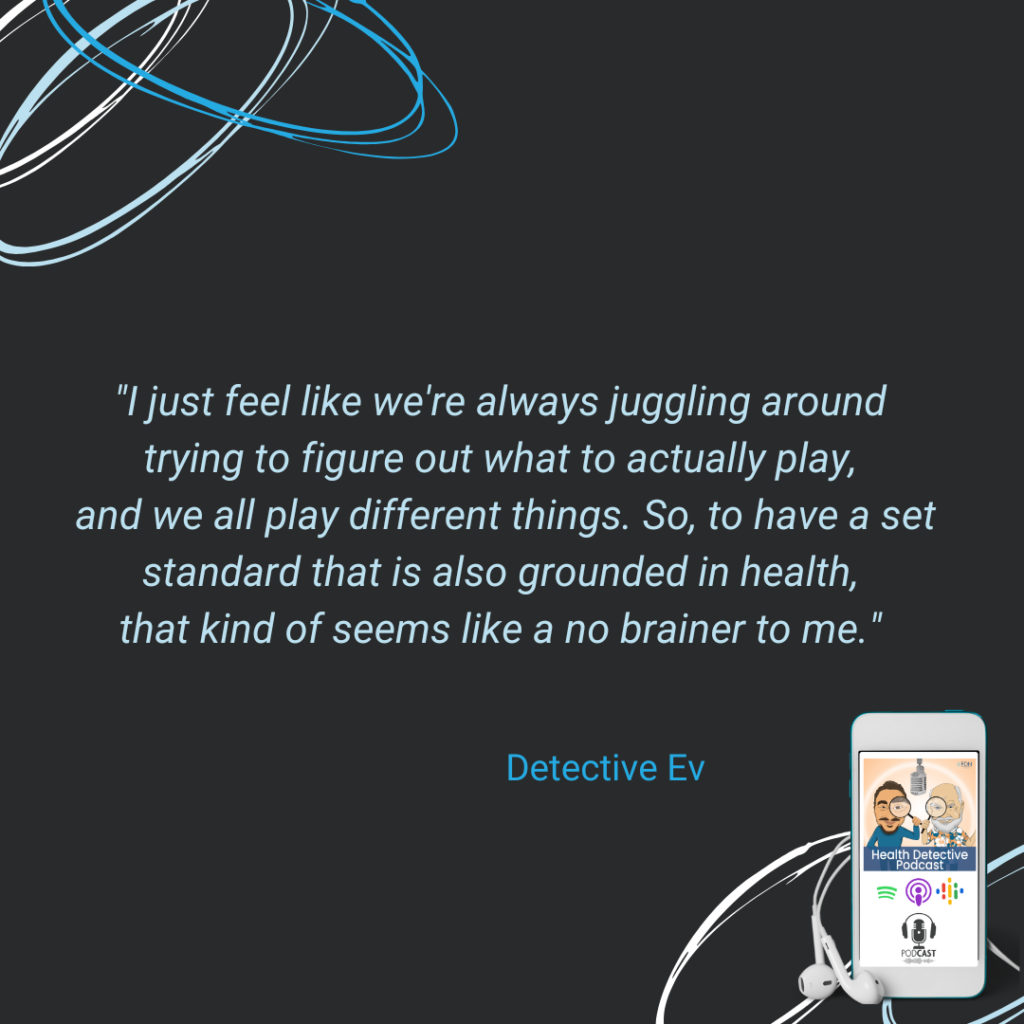
It would kind of make so much sense at our studio. I just feel like we’re always juggling around trying to figure out what to actually play, and we all play different things. So, to have a set standard that is also grounded in health, that kind of seems like a no brainer to me.
It looks like that might be all for the questions. But Ian, I just wanted to thank you for coming on today. Joe, thanks for helping bridge this gap and telling about those testimonials too. I’m always fascinated by that. I’m actually kind of like obsessed with the story part and to hear what this is doing for people.
Listening to Smile’s Sound Healing: A Legitimate Healing Modality
This is amazing because this is even simpler than taking a supplement. You’d think a supplement’s easy, but I promise you, and everyone on here knows this, that’s an FDN. Sometimes it can be a little hard to stick to every single day or some clients don’t like swallowing a capsule. I have not met the human being yet that does not listen to music.
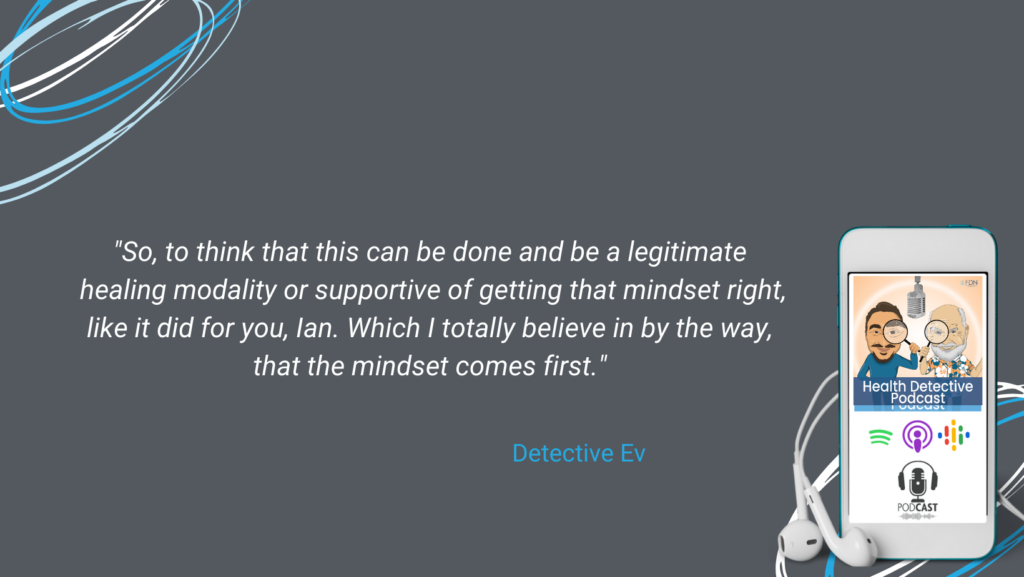
So, to think that this can be done and be a legitimate healing modality or supportive of getting that mindset right, like it did for you, Ian. Which I totally believe in by the way, that the mindset comes first. Healing is a personal development journey. Healing is the result, but the real journey is the personal development one.
So yeah, just thank you so much for coming on today. Any last words or are we good to go?
[00:46:32] Ian Morris: I was just going to say that Listening to Smile on YouTube, if you type in Listening to Smile in YouTube, we have a page on there that’s just testimonials right now. I think there’s like eight or so testimonials on there that people can scroll through and check through.
I’ll just say, in my personal opinion, I think in today’s mainstream medical field, for me, testimonials that are unpaid testimonials that are freely given.
Yes, I saw the question. So yes. They’re putting the fdn22 on the website, it says coupon code. That’s what they just asked. Sorry.
But yeah, I believe that testimonials speak volumes. We have testimonials from Europe and Australia and Canada and all over the US. It’s something that really means a lot to me because people are actually taking their own time and effort to put these out there. Then they’re sending them to us.
Sound Healing Benefits Animals Also
One, it helps us having that feedback. But two, because they’re unpaid, it just means a lot to me. Because a lot of the clinical studies that are out there these days, if you follow the money, a lot of the people who are paying for these clinical studies and holding them up to be a powerful thing to have this are the people who are benefiting from the study and they’re paying for the study. So, I feel like there’s kind of a contradiction in that practice.
For me, it just personally means a lot to have these testimonials. I love getting feedback from people that experience the music and then are willing to share in an unpaid way their experience with that. I think it means a lot these days.
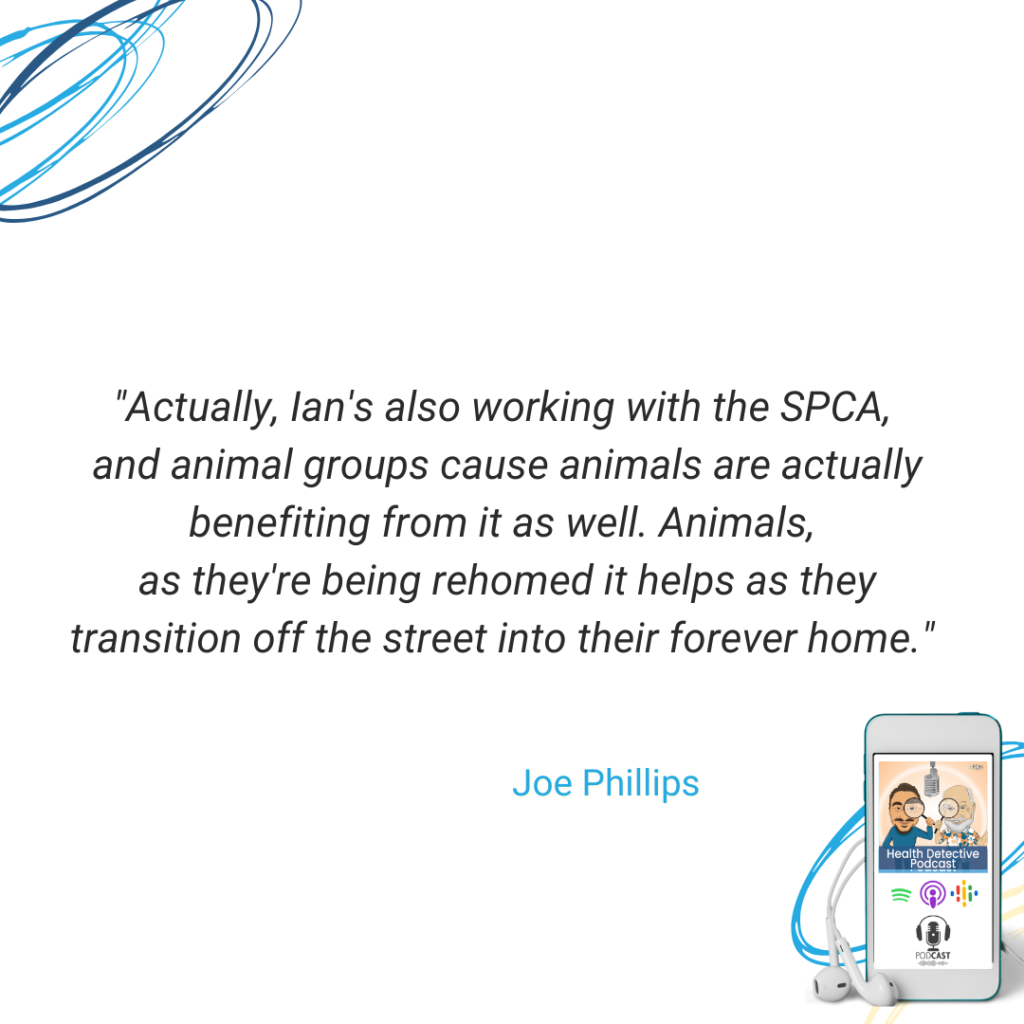
[00:47:58] Joe Phillips: Another thing I’d like to add in really quick before we leave, Evan. Actually, Ian’s also working with the SPCA, and animal groups cause animals are actually benefiting from it as well. Animals, as they’re being rehomed it helps as they transition off the street into their forever home.
It’s another cool feature. So, animals also are benefiting from this music.
[00:48:20] Detective Ev: I guess, it’s such an integral part to all of our existence. I mean, that kind of makes sense, right? And at the end of the day, it’s like, oh, well dogs and cats don’t make music. Well, they still are subject to frequency though, and this is just a targeted frequency.
It makes a lot of sense when you actually think about it and just say it out loud.
Country Music or Sound Healing for the Family Dog?
Of course, it could be affecting them. I know half the people that are listening to this that are dog owners are watching this also leave the radio on for their dog when they leave the house.
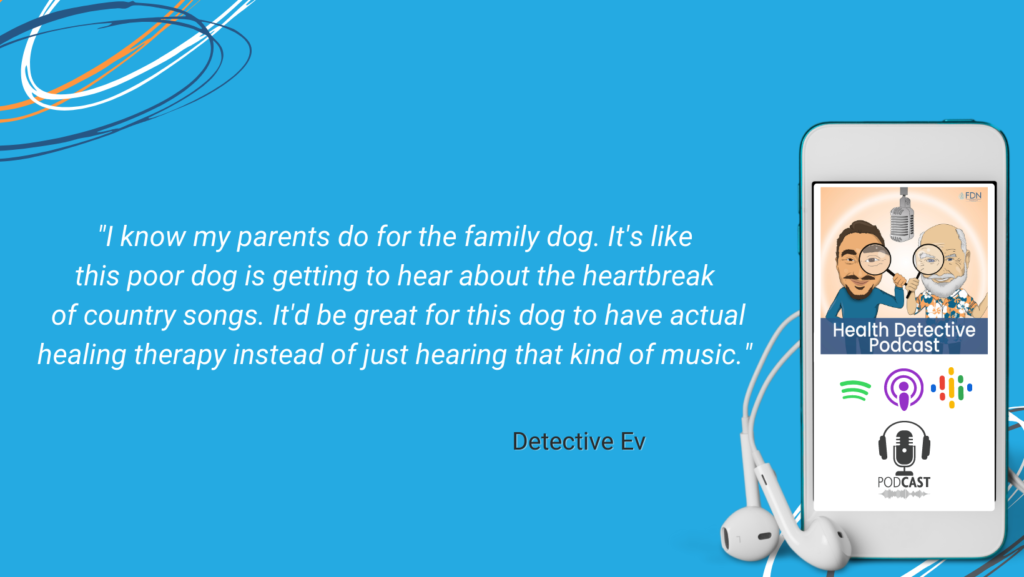
I know my parents do for the family dog. It’s like this poor dog is getting to hear about the heartbreak of country songs. It’d be great for this dog to have actual healing therapy instead of just hearing that kind of music.
Oh, Stephanie just purchased. She’s excited to use that. That’s awesome. I’m glad this is already being used by people. I’m going to have to look into it a little more.
She did specify guys for those listening to the podcast version or on Facebook, the code is lowercase fdn22. I’ll make sure that’s in the comments on Facebook for you guys, and I’ll make sure that’s in the show notes when I post as the podcast.
Conclusion
All right. Well, thank you guys so much. I’m glad I got to host this today. Maybe they’ll let me do it again sometime. Thank you, guys, very much.
You can always visit us at functionaldiagnosticnutrition.com.
To hire a coach, go to fdnthrive.com.
For a FREE Health Review, go to fdnthrive.com/match/.

